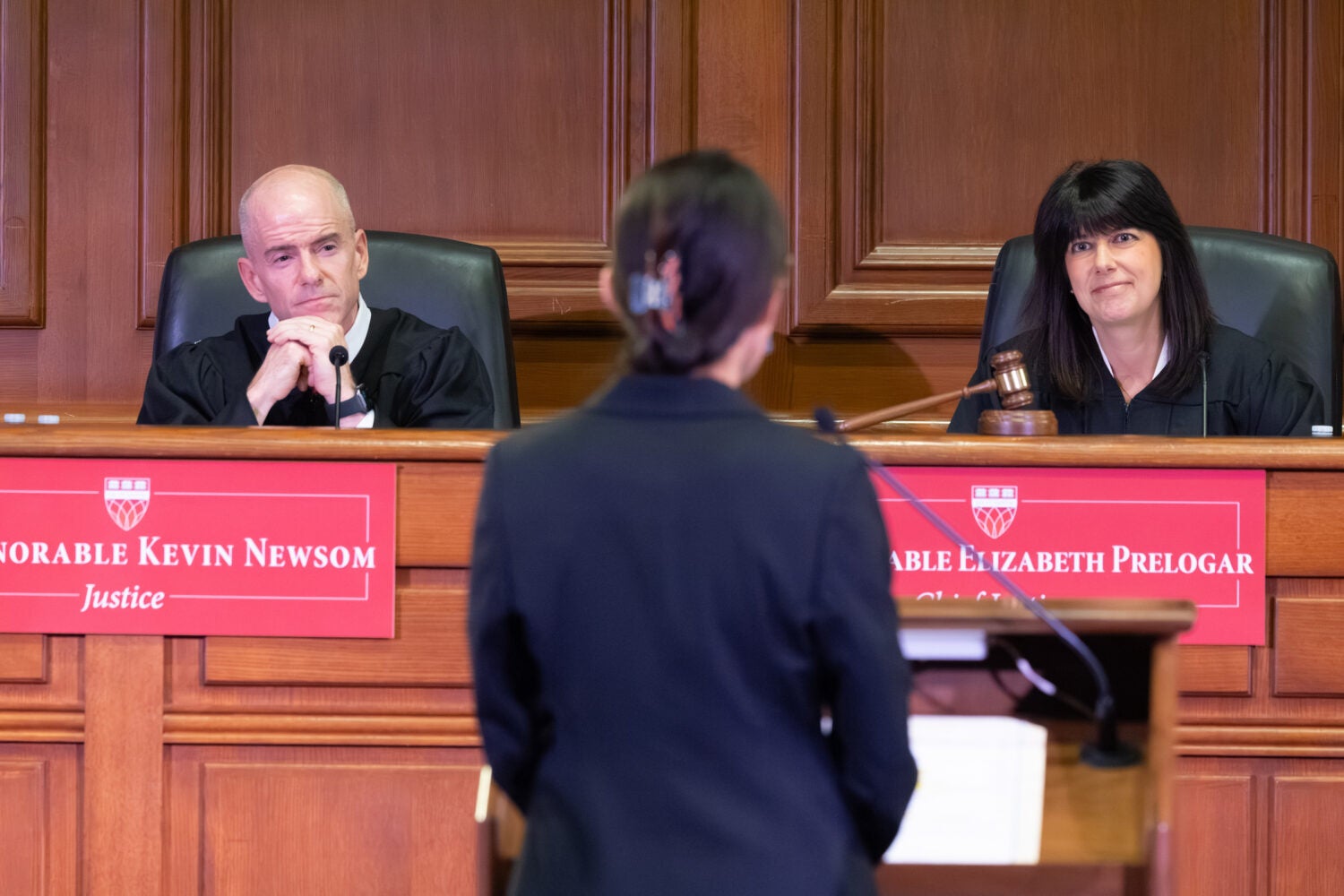The Fifth Amendment to the United States Constitution bars the government from taking private property for public use without fair compensation. But can a plaintiff sue for an alleged violation of that right by a state government, absent a law explicitly allowing them to do so? And even if they can file a lawsuit, could the state still be immune from liability?
These were the complex questions at the heart of the final round of the 2025 Ames Moot Court Competition at Harvard Law School, held on November 17. One of the top appellate brief writing and advocacy contests in the nation, Ames pits two teams of students against one another to argue a hypothetical case — and battle for the titles of best written brief, best oralist, and best overall team.
Judging this year’s events were Elizabeth Prelogar ’08, former solicitor general of the United States; Judge Kevin Newsom ’97 of the United States Court of Appeals for the Eleventh Circuit; and Associate Justice Leondra Kruger of the Supreme Court of California.
The fictional scenario centered on Daniel Welles, a businessman in the equally fictitious state of Ames. During the COVID-19 pandemic and after the federal government declared a public health emergency, Welles’s hand sanitizer manufacturing plant was commandeered by Ames to address a dire supply shortage. Although the factory was returned to Welles after the emergency ended, he received no compensation for its use, and Ames does not provide a legal avenue to sue when the state takes private property. Hoping to recoup some of his losses, Welles sued Ames directly under the Fifth Amendment’s Takings Clause — echoing the issues raised by a real Supreme Court case from last term, Devillier v. Texas.
But the hypothetical lower court threw out Welles’s suit, reasoning that the Fifth Amendment does not itself create a legal cause of action, and even if it does, Ames would enjoy sovereign immunity under the Eleventh Amendment. The appeals court reversed on both issues. It was up to the students representing both sides to convince the three jurists presiding over the nation’s highest court.
Ames states its case
Appearing first before the Court was The William Thaddeus Coleman Jr. Memorial Team, which represented the petitioner, the state of Ames. Team members included oralists Gregory Terrell Seabrooks ’26 and Sophie Li ’26; and Lev Cohen ’26, Justin Curl ’26, Sophia Loughlin ’26, and Sadie Statman ’26.
Seabrooks addressed the Fifth Amendment issue head-on. “Five years ago, nine justices affirmed what has always been true: the Takings Clause does not provide an express cause of action.”
To imply one, Seabrooks argued, would not only violate the separation of powers, but would also be contrary to several of the Court’s recent decisions.
The judges quickly launched into questions, foreshadowing an evening of rapid-fire interrogation and deft responses by the oralists on both sides.
Prelogar first wondered if the petitioner’s argument that implying a cause of action would indeed open the floodgates to other implied causes of action, as it had argued in its brief.
“I think there’s a very natural limitation built into the Constitution, because this is a special provision insofar as it sets out a right and specifically demands a remedy,” she said. “I wonder why we can’t look at that specific combination, which also applies to habeas corpus, and find that with those limited constitutional rights, there should be a cause of action that’s self-effectuating under the Constitution itself.”
Seabrooks disagreed, arguing that “the right to a remedy did not create a cause of action at the founding.”
He sought to distinguish habeas corpus from the Takings Clause.
“The writ of habeas corpus not only enshrines the judicial remedy of habeas but also enshrines a cause of action with the word ‘writ,’” Seabrooks said. “The privilege to apply for habeas corpus is an example of what Congress could have and should have done [with the Takings Clause], if they had wanted to enshrine a right to just compensation that would be judicially enforceable.”
Moreover, Seabrooks argued, there were other ways in which Welles could have tried to obtain compensation for his losses, even absent a cause of action for inverse condemnation.
“Here, there are alternative remedies available that should caution this Court before creating a new cause of action,” he said, adding that the plaintiff, Welles, could have filed a due process claim under 42 U.S. Code § 1983 or sued the appropriate state official.
Prelogar nonetheless worried that if the court ruled for Ames, there would be little to stop other states from eliminating their own inverse condemnation causes of action — and running roughshod on private property rights.
“Why are you fighting this so hard?” she asked. “What is at stake?”
“In this context, what the state loses with a direct cause of action under the Takings Clause is the ability for it to define its own remedial scheme,” Seabrooks replied.
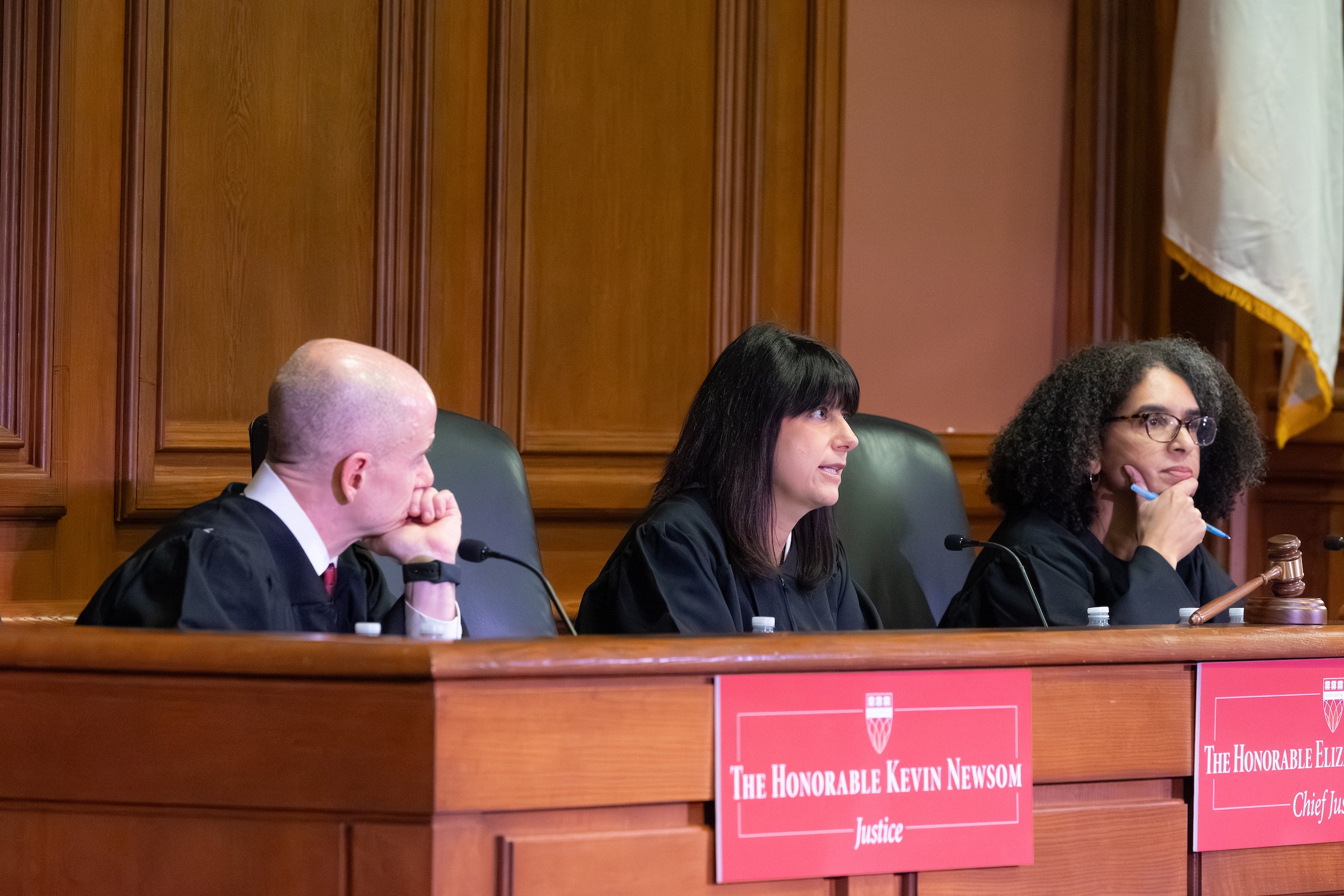
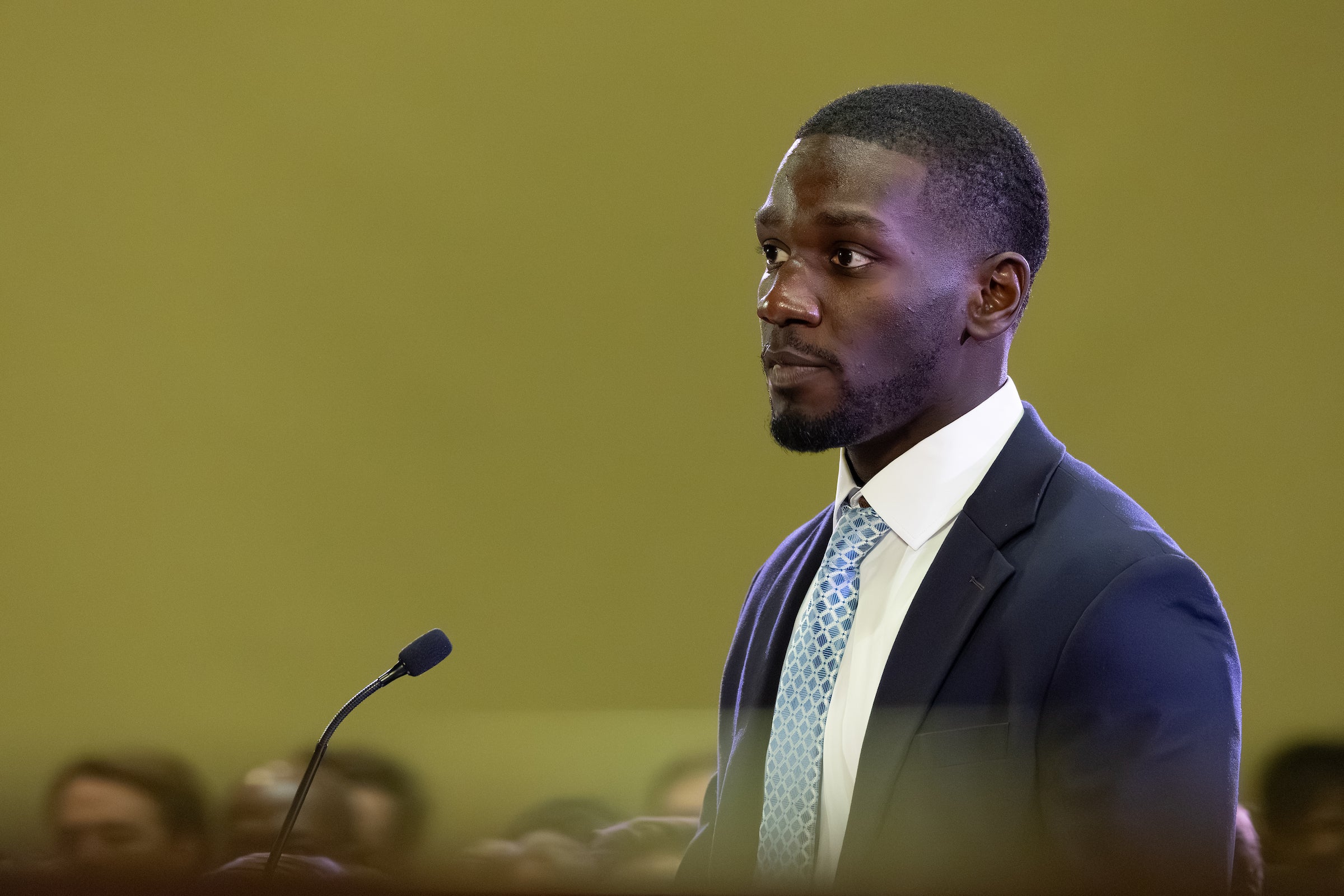
Li then took to the podium to address the state of Ames’s claim of sovereign immunity. States are subject to lawsuits, she said, only in situations where Congress has unequivocally abrogated immunity or when the states themselves have waived protection.
Neither applies in this situation, she said.
Newsom jumped in to ask about an understanding of the 11th Amendment that contends that it only protects states from suits by residents of other states.
“As a matter of history and original understanding, I think we should push a little bit on that interpretation,” Li responded. “This Court has said that we don’t read the 11th Amendment precisely for what it says, but rather the broader presupposition that the 11th Amendment converts.”
Kruger asked why the Court should allow this implied extension of protection to nonetheless “override a state citizen’s right to just compensation” to which they’re entitled under the Fifth Amendment.
“In the sovereign immunity context, the general idea that somehow an implied form of constitutional principle is less valid doesn’t really work for the very reason that the United States’s own immunity is also by implication,” Li replied. “The U.S.’s own immunity is not by constitutional text, but we, of course, still say that the U.S. is immune until and unless it consents to be sued.”
But Li added that she also wanted to address the concern that sovereign immunity could be used to completely block the plaintiff’s right to just compensation. “I think that any conflict between these two principles is really a function of the way respondents have pled their case,” she said. “Generally speaking, for hundreds of years, the way litigants were able to get just compensation was by suing the individual officer directly.”
Prelogar wondered why Ames, having removed the case from state to federal court, had not therefore waived its immunity in federal court.
“Lapides [v. Board of Regents of University System of Georgia] itself expressly declined to pass upon the case we have today, because at the very beginning of its opinion, Lapides explained that we do not need to pass upon the scope of waiver in a case where the state has not waived immunity in state court,” Li responded.
Li added that, even if Ames could be found to have waived its immunity to be sued in federal court, it had not waived a separate right to immunity from substantive liability.
Finally, Prelogar asked why states would not have been aware when entering the union that they would be liable for just compensation under the Fifth Amendment.
“The best evidence against that is the fact that the federal government was immune for almost 100 years until it decided to waive sovereign immunity,” Li replied. “I think it would be illogical for states to have looked at the only other comparator, the federal government, and said,’ Well, you know, you’re immune, but I surrender my immunity,’ given that states entered the system as co-equal sovereigns.”

The respondents rise
Representing the respondent, Welles, was The Charles Fried Memorial Team, including oralists Paneez Oliai ’26 and Nicholas Nelson ’26, along with Nathalie Beauchamps ’26, Joe Caplis ’26, Joshua Grambow ’26, and Coy Ozias ’26.
Oliai began by arguing that the Takings Clause does, in fact, provide a direct cause of action.
“Ames cannot ignore the stakes of this case,” she said. “The fact of the matter is that at the end of the day, the Fifth Amendment provides a cause of action. Or, if Ames can invoke sovereign immunity to get around that, Ames can take whatever property it wants, whenever it wants, without ever paying a dime.”
“So, you’re beginning with consequentialism? It seems like a strange place to begin,” Newsom opined.
“Not at all,” Oliai said. “We point this Court to the text and structure of the Takings Clause, as this Court instructed in [Alexander v.] Sandoval .”
The Takings Clause provides a “substantive right and an express monetary remedy,” as required by the Court in Sandoval, she added.
Newsom wondered why Welles had chosen not to fully rely on the precedential case of Bivens [v. Six Unknown Named Agents], which had created an implied cause of action under the Fourth Amendment. That case may be “disfavored” by the modern-day Court, but nonetheless, he asked, “Why are you fighting the friendly hypo?”
“If this Court were to find in favor of our client, certainly we would not complain,” Oliai responded. But she added that, in the respondent’s view, the text of the amendment is clear enough that “we do not think this Court needs to resort to the reasoning of Bivens or any other old forms of implied cause of action.”
Kruger pushed back. “This is not at all how the Takings Clause was understood for roughly the first century of this nation’s existence,” she said.
Oliai responded by pointing to language in last year’s Devillier decision, in which Justice Clarence Thomas “explained that the absence of a case under a Fifth Amendment cause of action does not mean that there is no Fifth Amendment cause of action.”
Prelogar wondered what it would mean if there was a cause of action under the Fifth Amendment — could that “substitute in for any state-level remedies,” or is Welles’s situation unique, because Ames does not have its own cause of action?
“First, this cause of action, we think the best reading is that it is always provided full stop under Fifth Amendment statements clause,” Oliai said. “But to your concern that state remedial systems would be displaced, rest assured, we would never ask this Court to do that.”
“How could the Takings Clause, same words, mean different things in different states?” asked Newsom. Oliai replied by distinguishing cause of action and sovereign immunity as “different things.”
“The cause of action, we think the best reading is that it always exists under the Fifth Amendment’s Takings Clause,” she said. “But states can invoke sovereign immunity when they have a remedial system.”
Importantly, she added, Ames does not have such a system.

Finally, Nelson took to the podium to explain why the respondents believe that Ames cannot invoke sovereign immunity.
“Sovereign immunity is not a license to seize property free of charge, but the state of Ames believes otherwise,” he said. “Ames argues that it can use its sovereign immunity to take Mr. Welles’s property and then forever deny him his constitutionally guaranteed just compensation.”
Newcom cut in. “Are you asking us to walk back” the Court’s decisions applying the 11th Amendment to residents suing their own state?
“Not at all,” Nelson said. “The Takings Clause is unique in the Constitution in that it provides an affirmative obligation on the … government. But that’s not true of any other provision of the Bill of Rights.”
All the other rights, Nelson added, could be vindicated “in ways entirely consistent with state sovereignty.” But because the obligation here is an affirmative one, Nelson said, “you have to go knock on the government’s door and ask for that just compensation. If state sovereign immunity will allow them to slam the door closed, you’ll be leaving empty-handed.”
Couldn’t Welles have asked for an injunction, as would be the case with other “negative” rights, Prelogar asked.
“Mr. Welles would not have been able to obtain an injunction before the actual taking occurred, because nothing on the face of the Governor’s Executive Order is itself unlawful,” Nelson replied. “[The order] just authorized the hospital system to requisition property. Nothing in there said that it … wouldn’t pay Mr. Welles for the property when it did the taking.”
But Welles could have gotten an injunction sometime after the taking, noted Kruger.
“The compensation remedy is required by the Constitution, even for a temporary taking,” Nelson said.
“We are dealing here with a head-on collision between the right to just compensation and state sovereign immunity,” Nelson acknowledged. “There is no other way for Mr. Welles to obtain just compensation, if the state of Ames can successfully invoke state sovereign immunity here.”
When such conflicts of law arise, Nelson concluded, the Court should “favor the express right to just compensation over implied background principles of state sovereignty.”
Nelson insisted that a judgement for the respondent need not disrupt other state remedial systems.
“I think it probably turns on the idea this right needs to be vindicated somewhere,” he said. “The state of Ames can’t just rely on its sovereign immunity to nullify the right to just compensation completely.”

Tough decisions: Best written brief, oralist, and overall team
After both sides rested, the judges returned to their chambers for a lengthy deliberation. Finally, they returned their decisions.
Li, of The William Thaddeus Coleman Jr. Memorial Team, was crowned best oralist.
The respondents — the Charles Fried Memorial Team — took honors for best brief and best overall team.
“We are beyond grateful to have our work over the past year and a half recognized,” says Nelson of The Charles Friend Memorial Team. “Throughout this whole process, the six of us have become one another’s closest friends at the law school. There were many sleepless nights over the past several months, and countless hours locked together in a room, sharing laughs and putting together the best arguments we could possibly come up with. We are all very grateful for each other, our competitors, and everyone else who made Ames the best experience we have had at Harvard Law School.”
After announcing the winners, Prelogar, who herself competed in the final round of Ames as a student, praised both teams for their exceptional achievements.

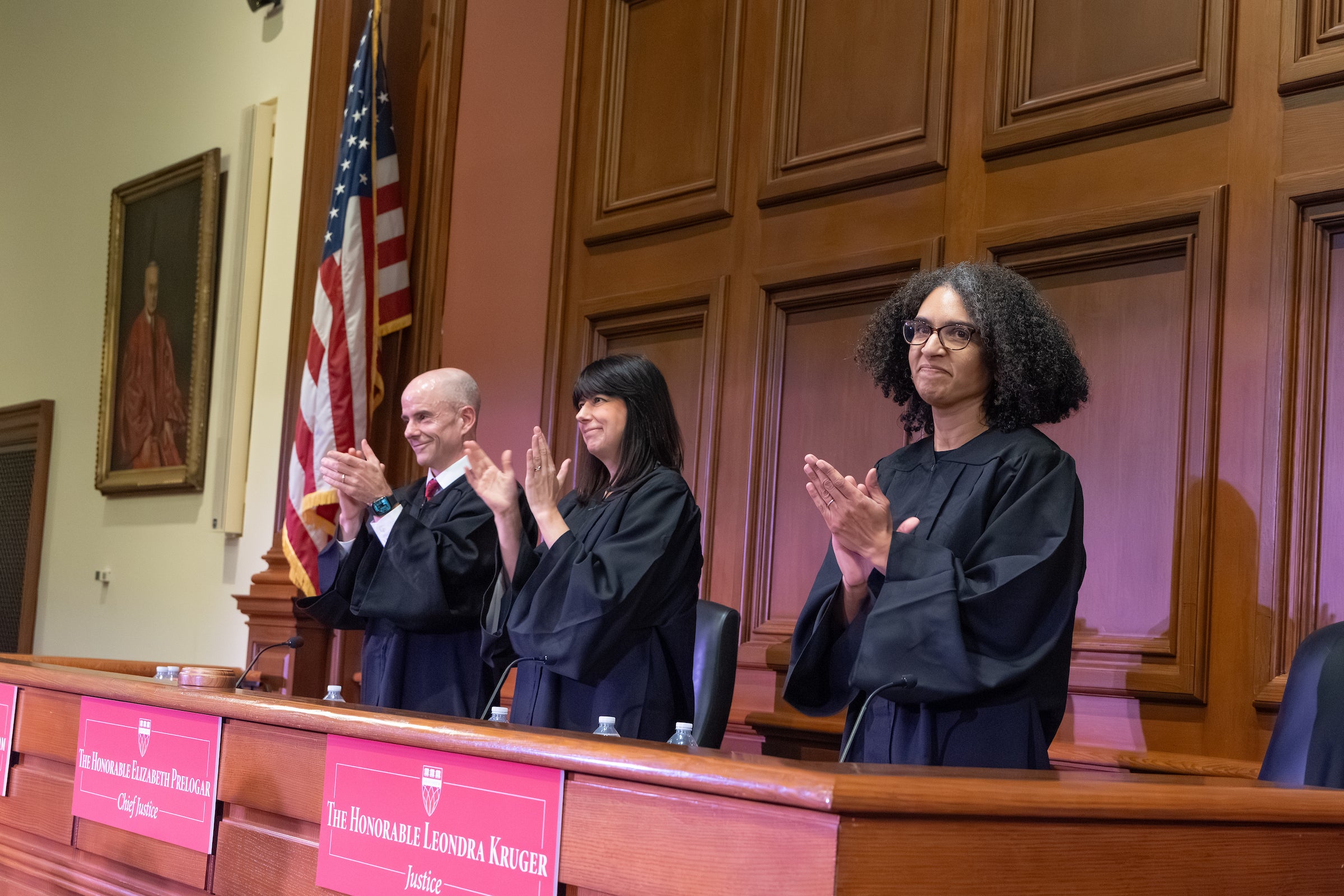

“The level of advocacy that we saw tonight was truly extraordinary for both teams,” she said. “You all did an incredible job. Whatever we threw at your way, you handled with grace under pressure and with total clarity of thought. It was really remarkable to see that.”
Newsom concurred, praising the “extraordinary performance” of the two teams.
“If we could see this level of advocacy day in and day out in our courts, we would be extremely happy about that,” he added. “You guys are going to be terrific lawyers.”
To Kruger, the student advocates demonstrated one of the most rewarding things about oral arguments: the chance to have difficult, but productive, conversations about the law — and help the judges better understand the questions in front of them. “I think everything that you displayed at the podium today really reinforced that sense of being in conversation with us and being there to help us work through those issues.”
“Whatever you do with the skills that you have honed and put on display tonight,” she concluded, “the world is going to be very lucky to take advantage of them.”
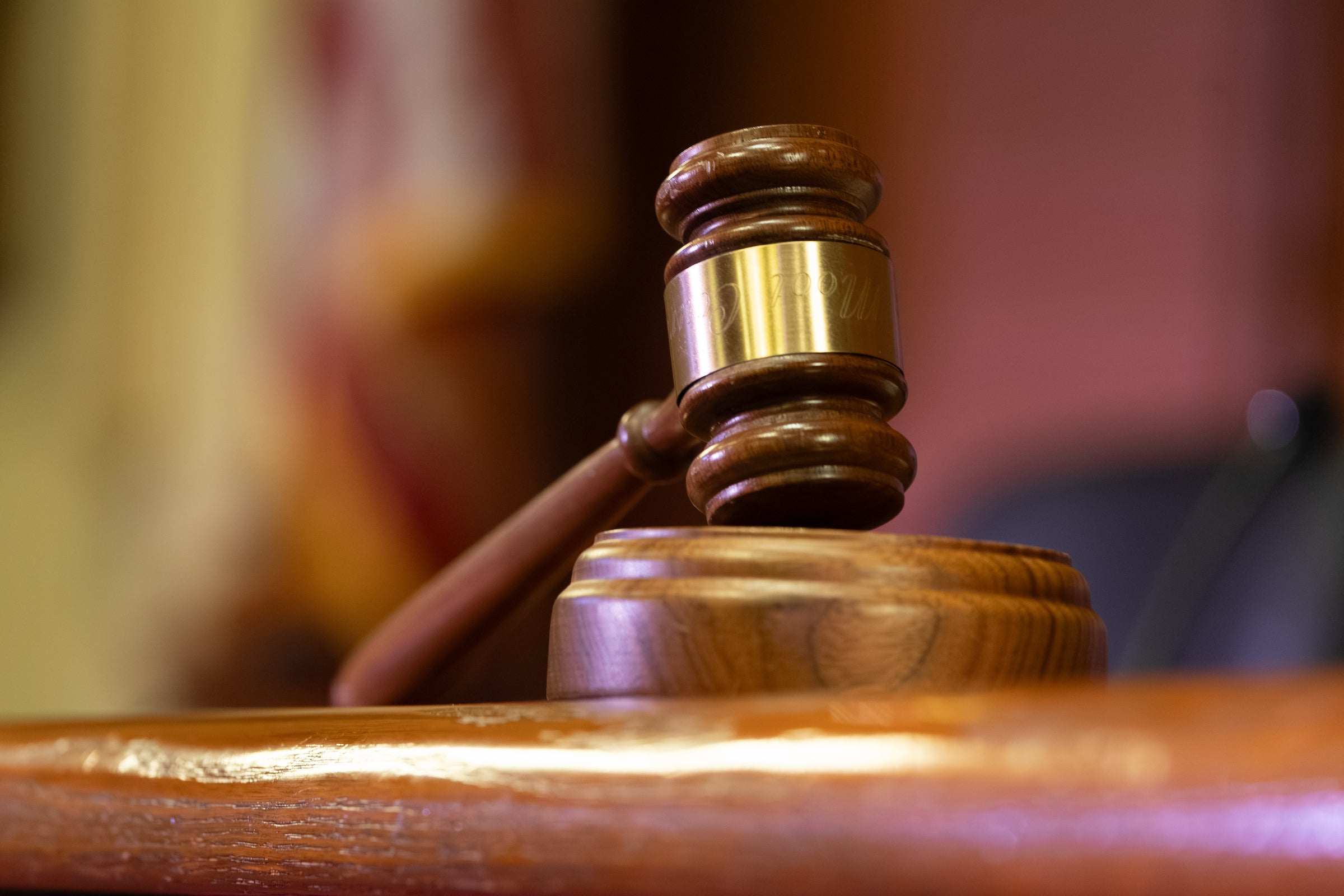


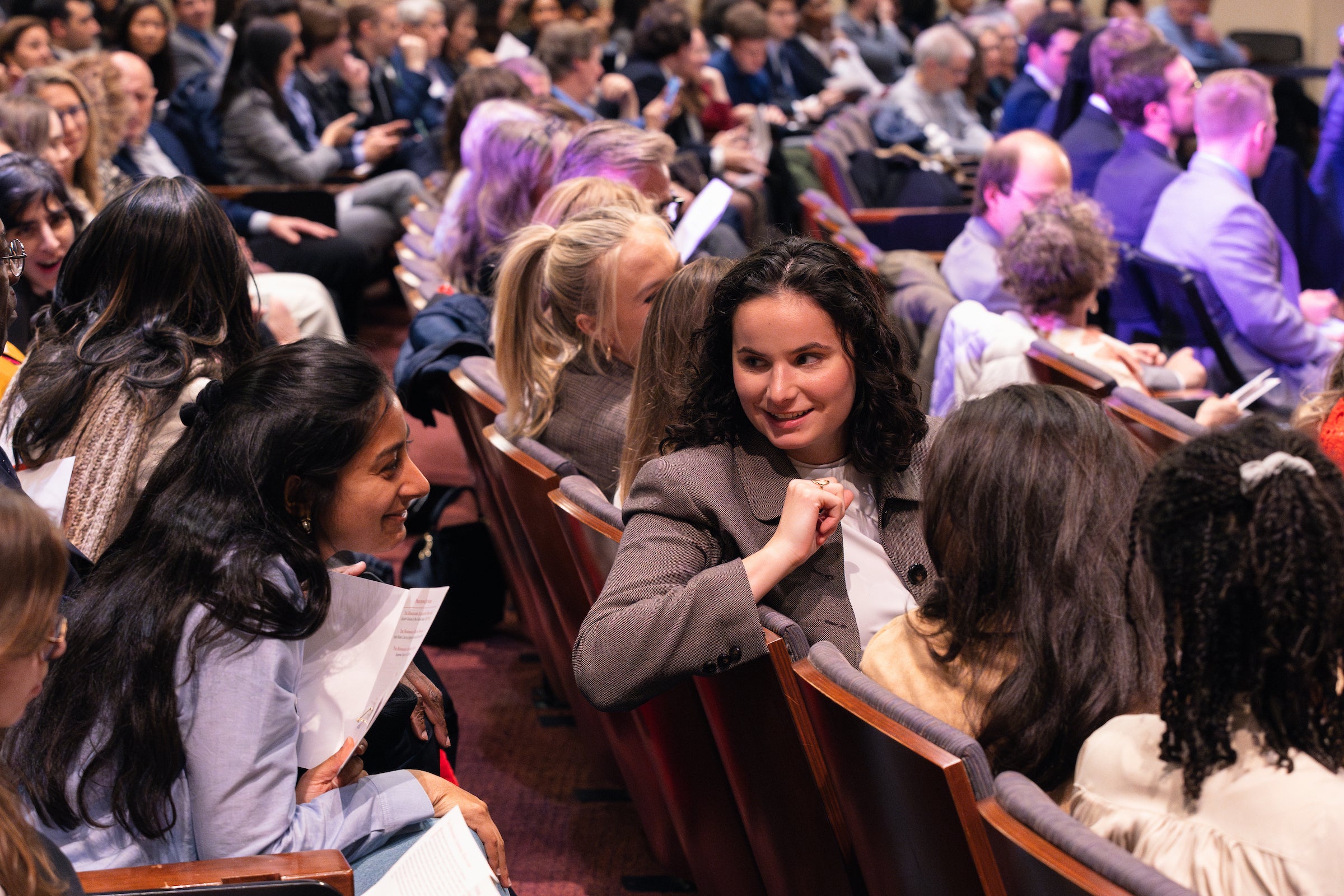
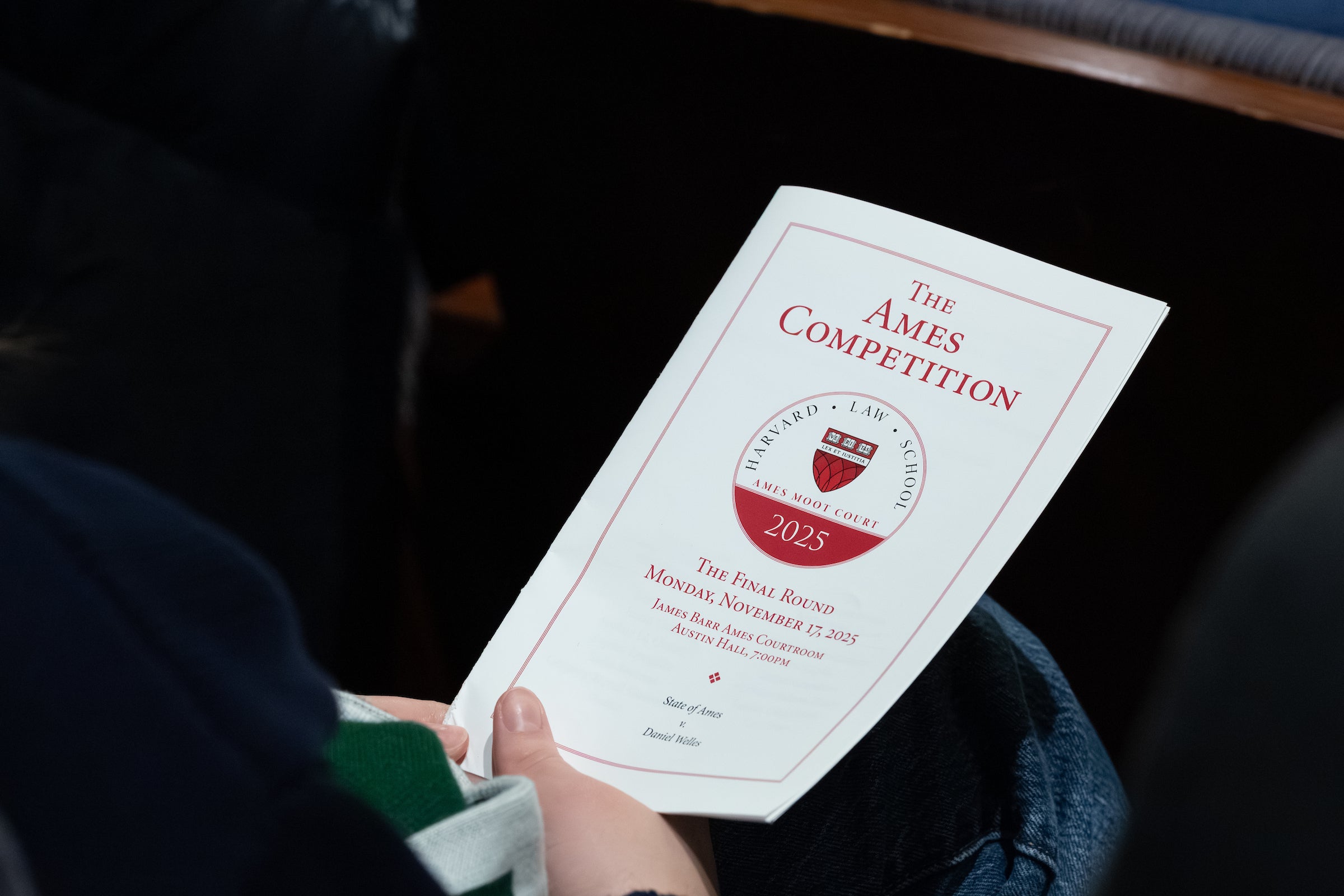
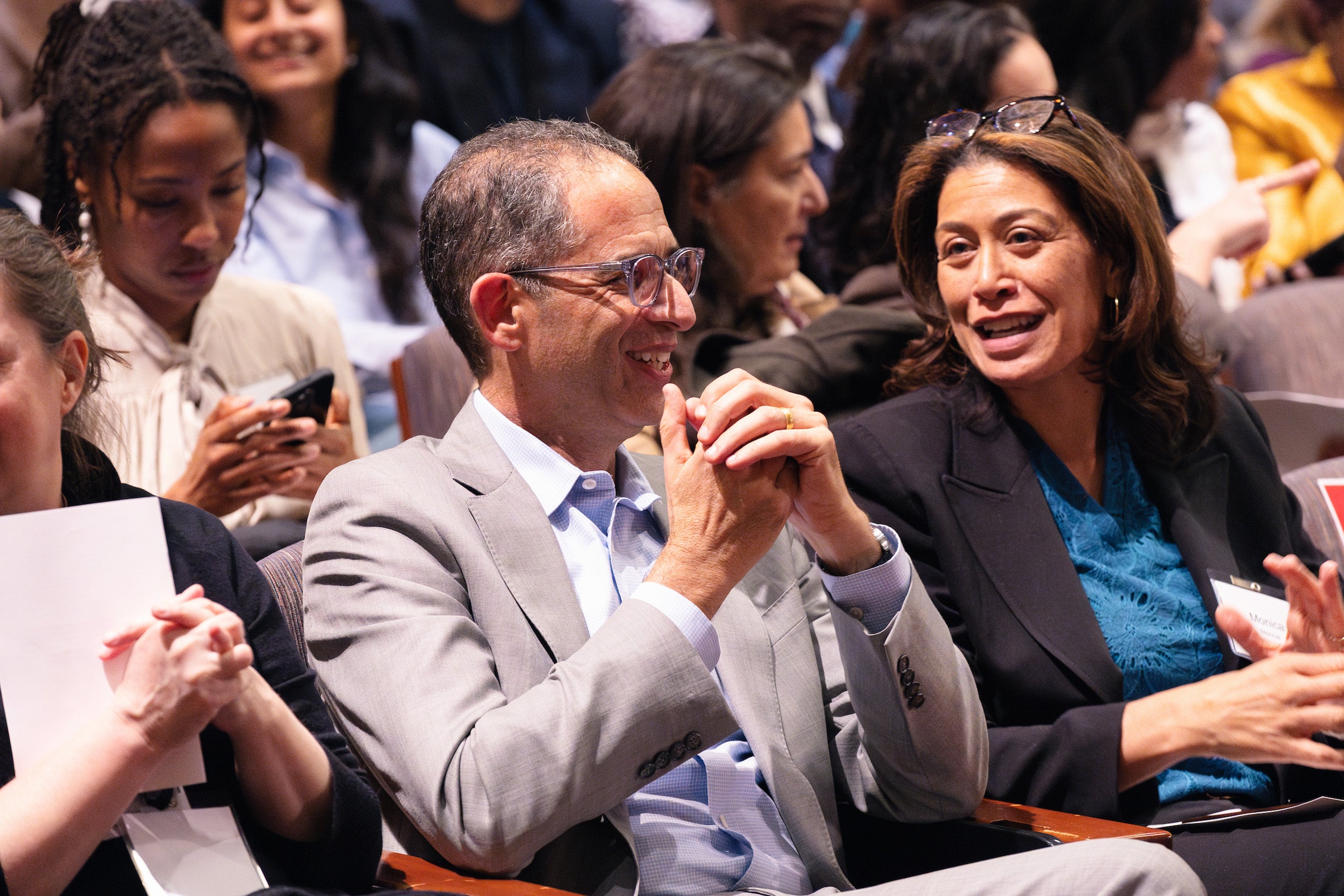

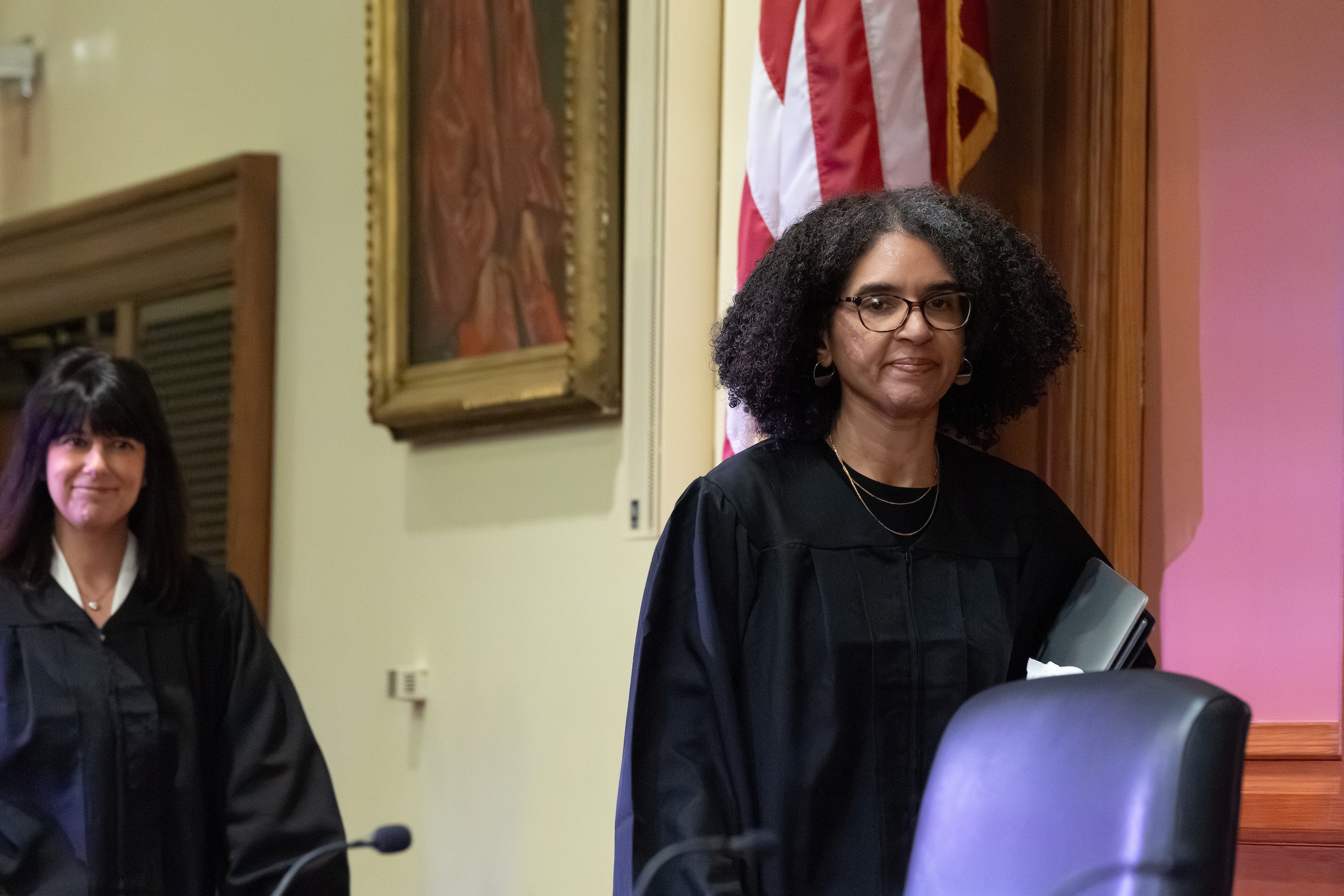
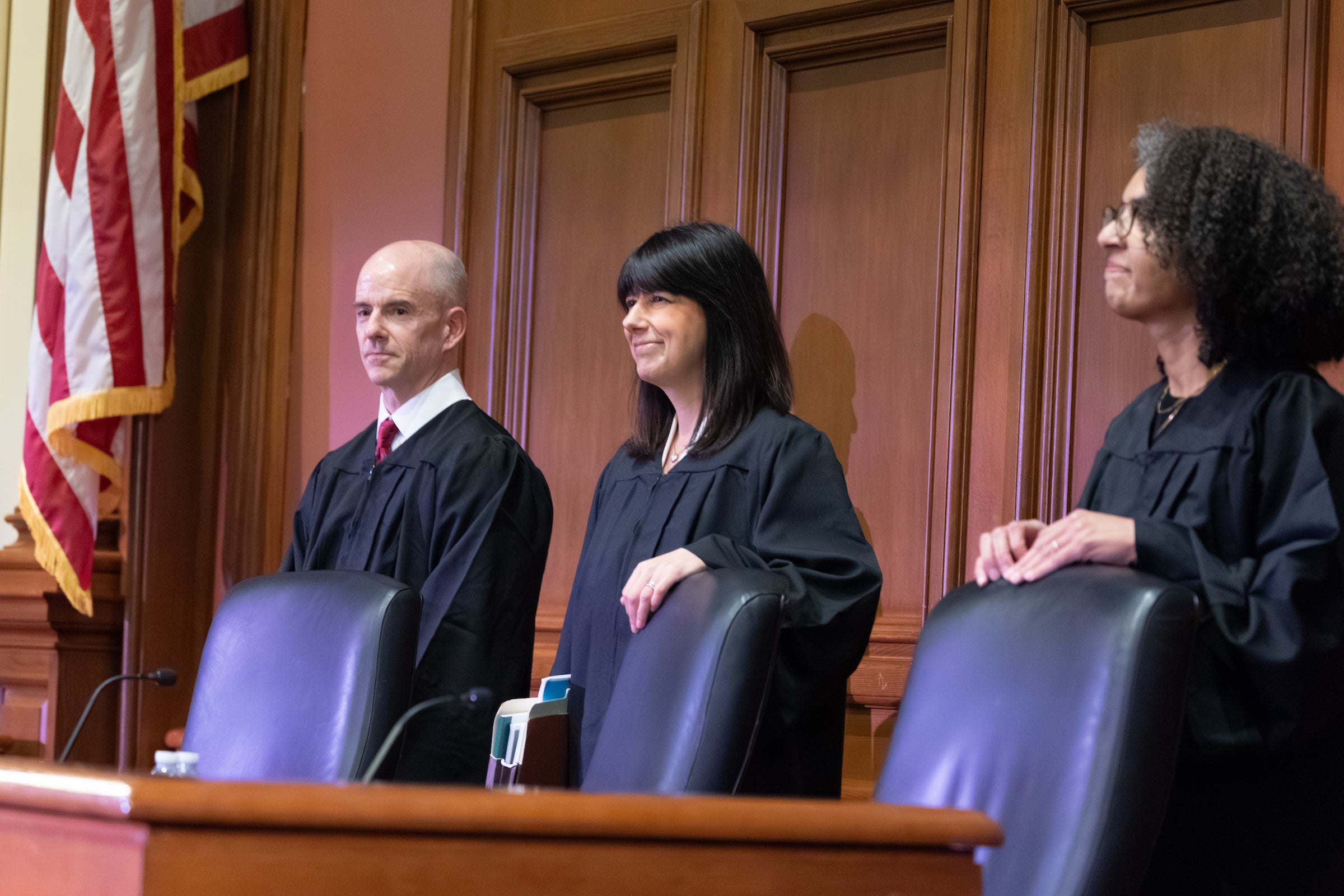


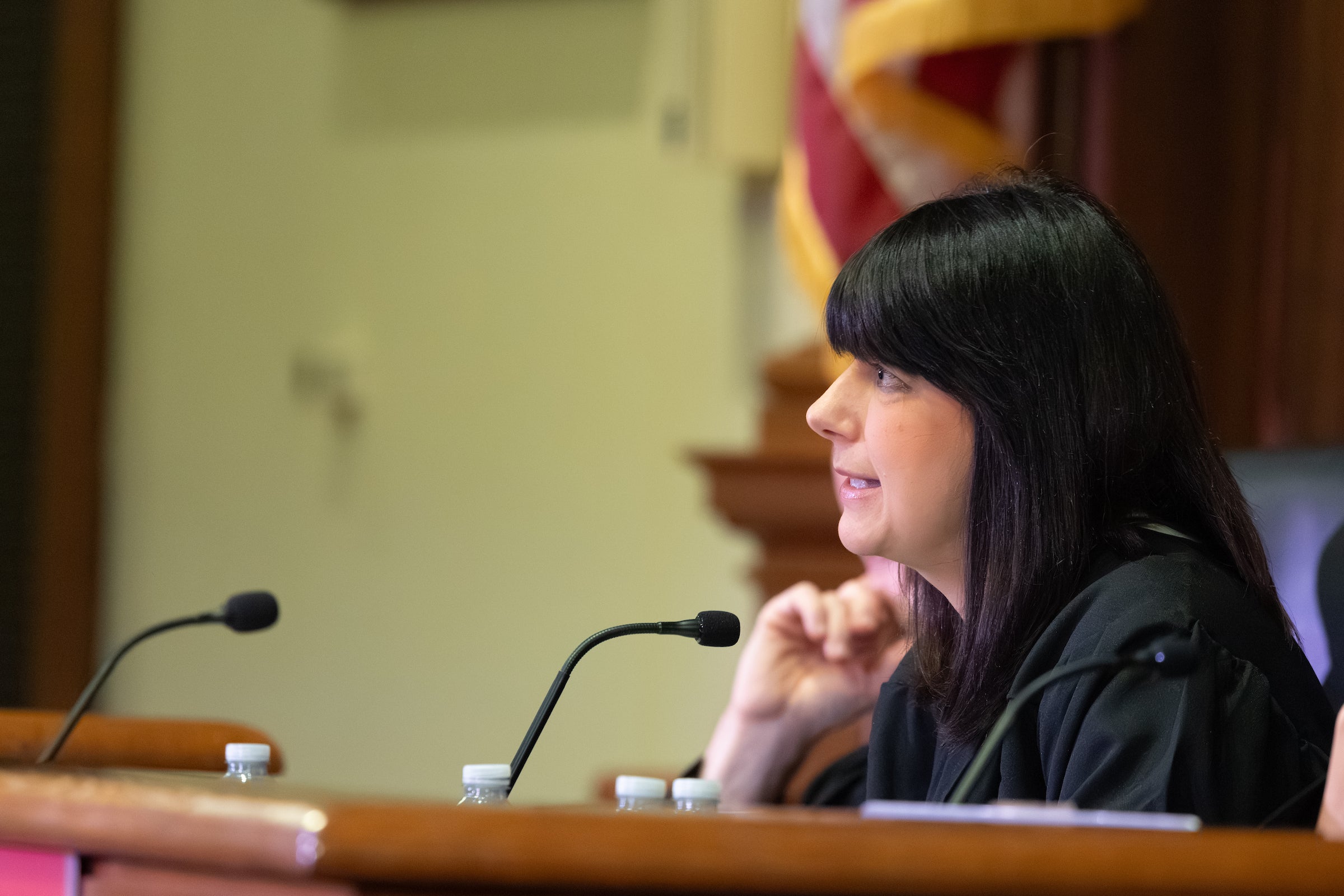

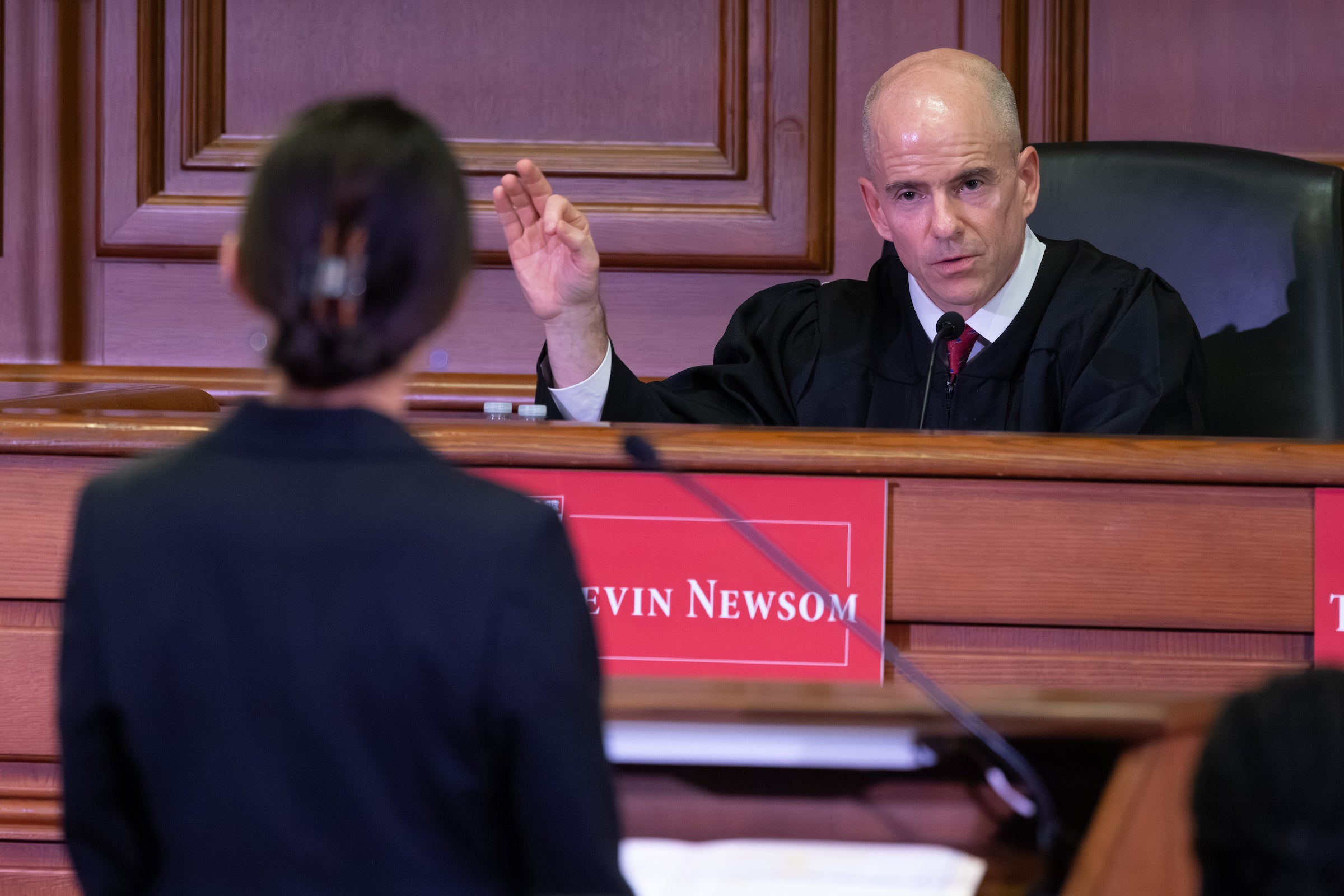

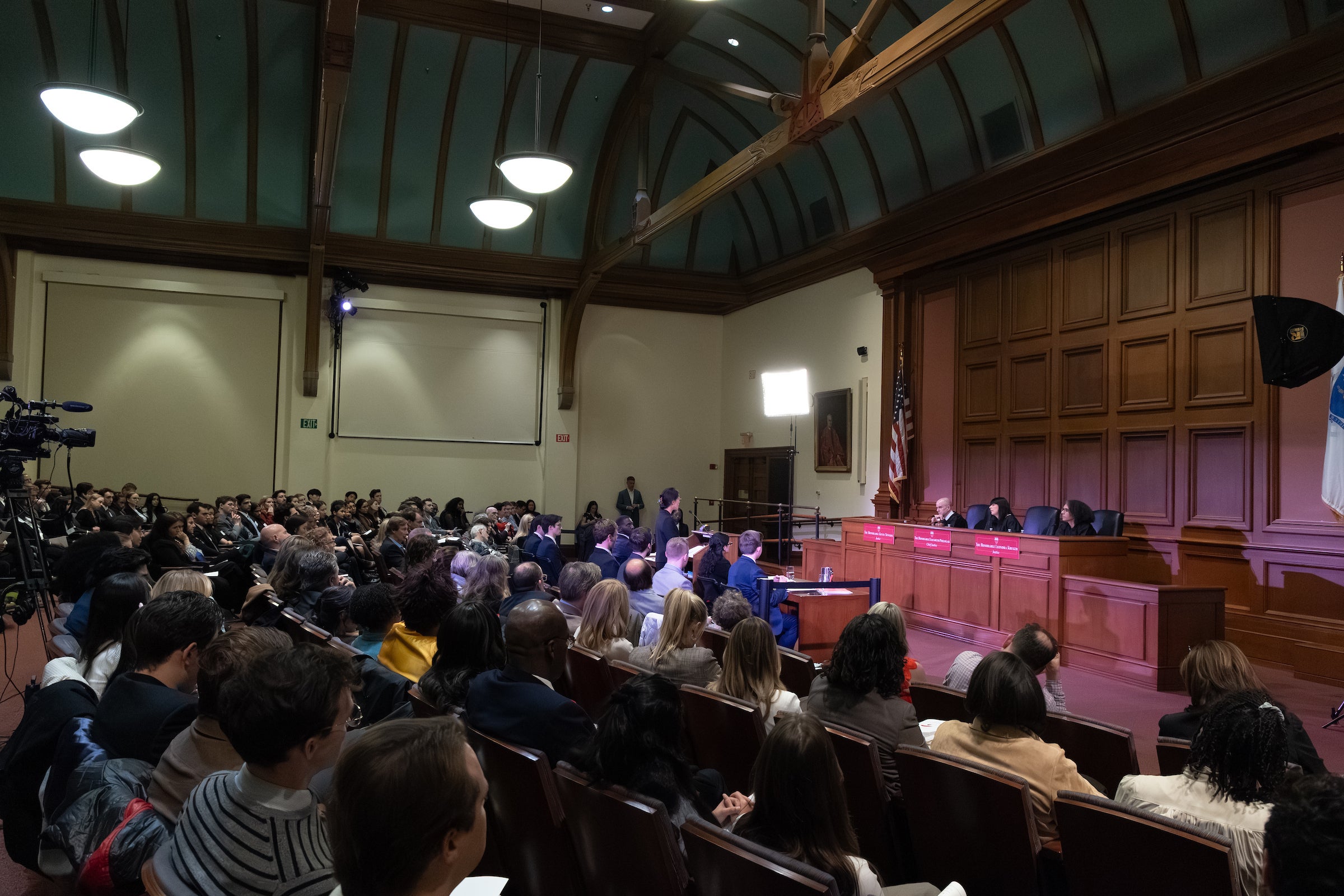

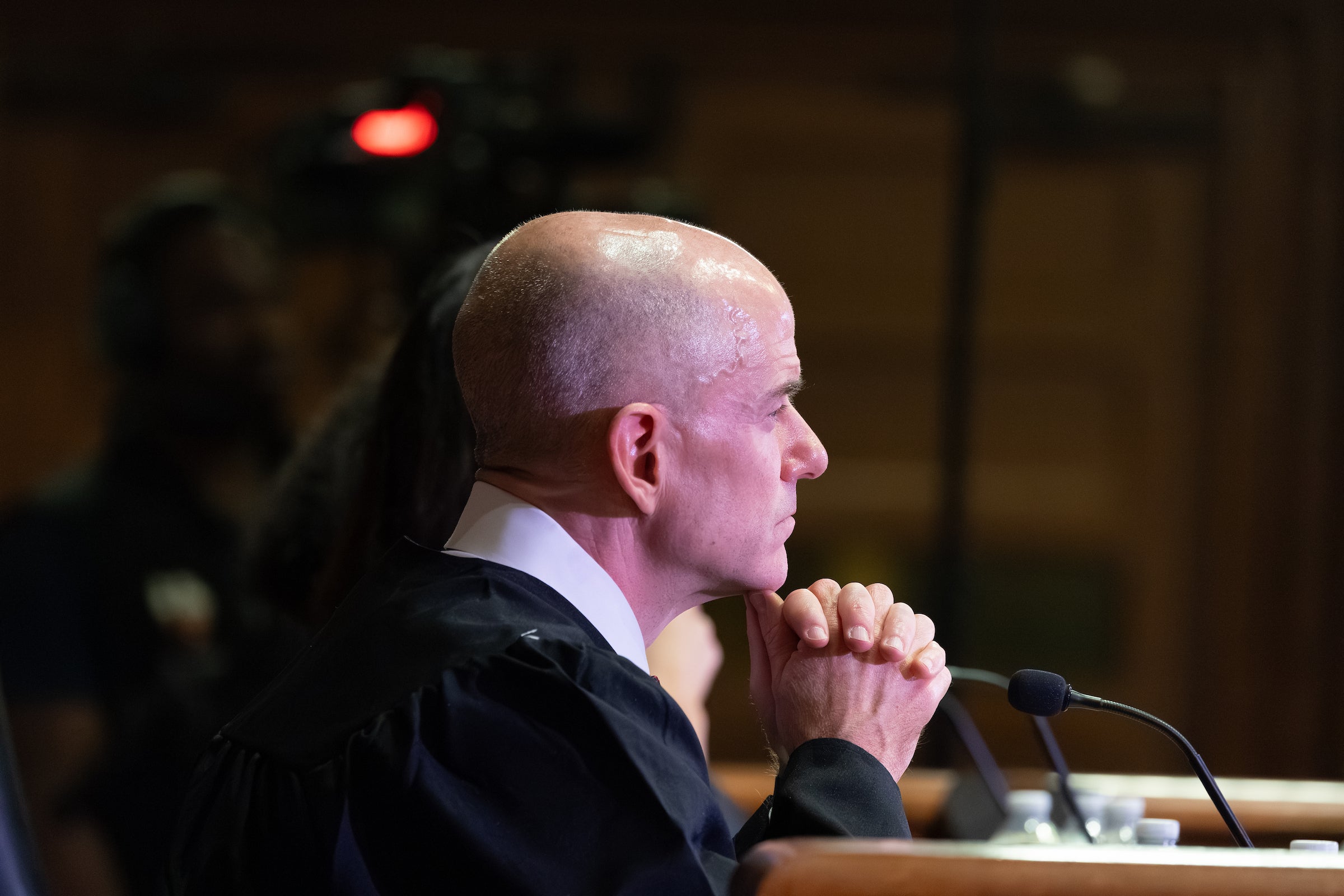
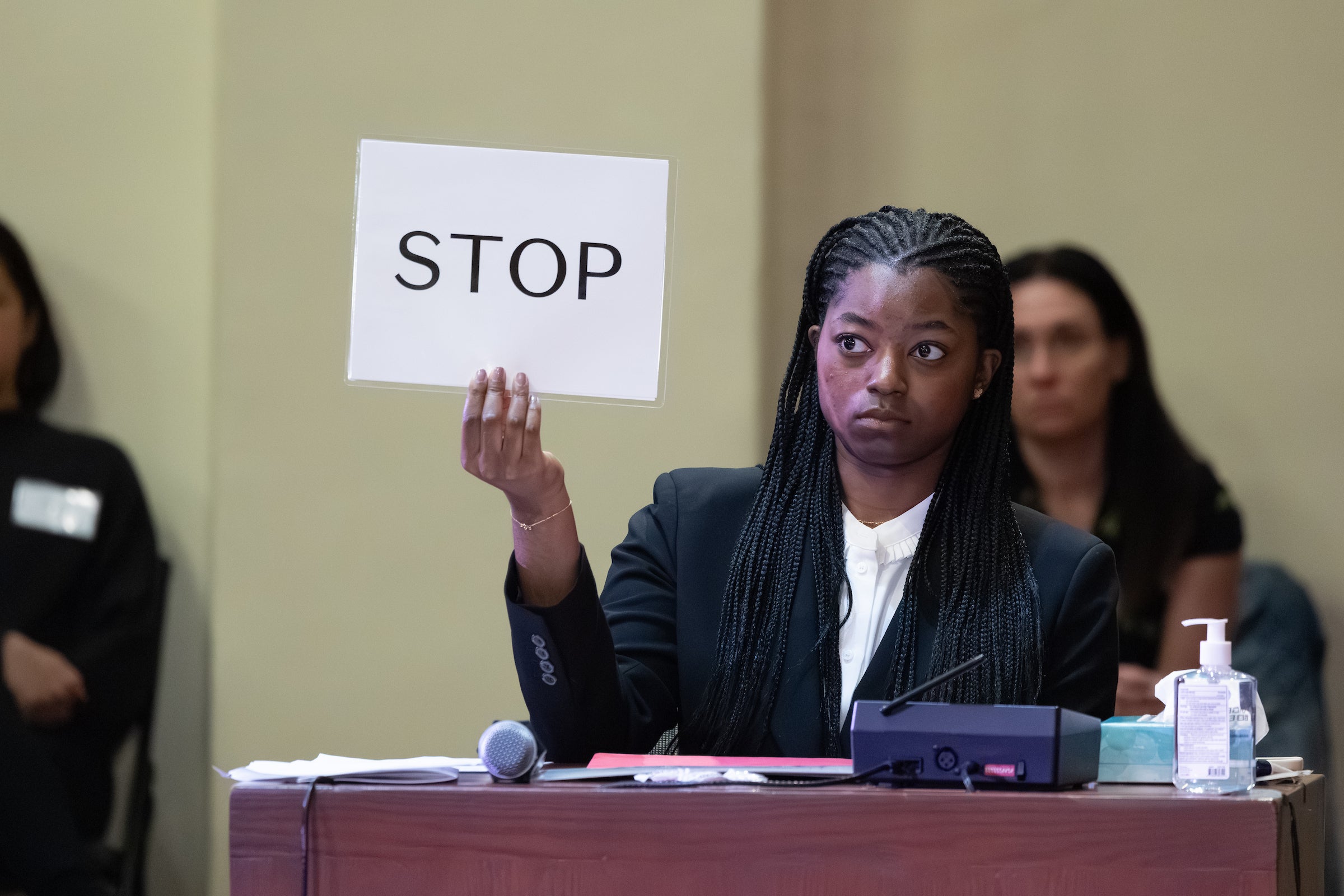
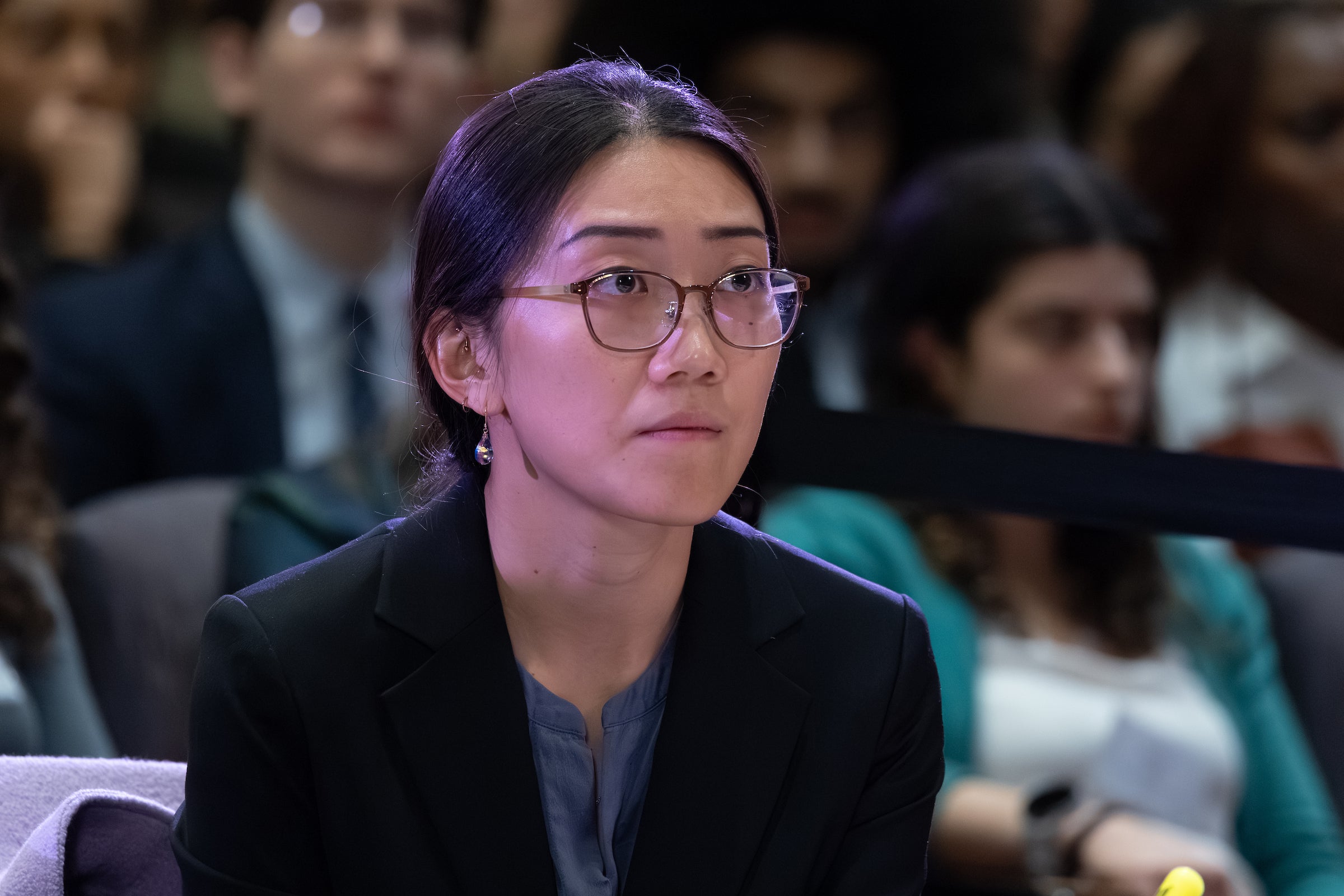
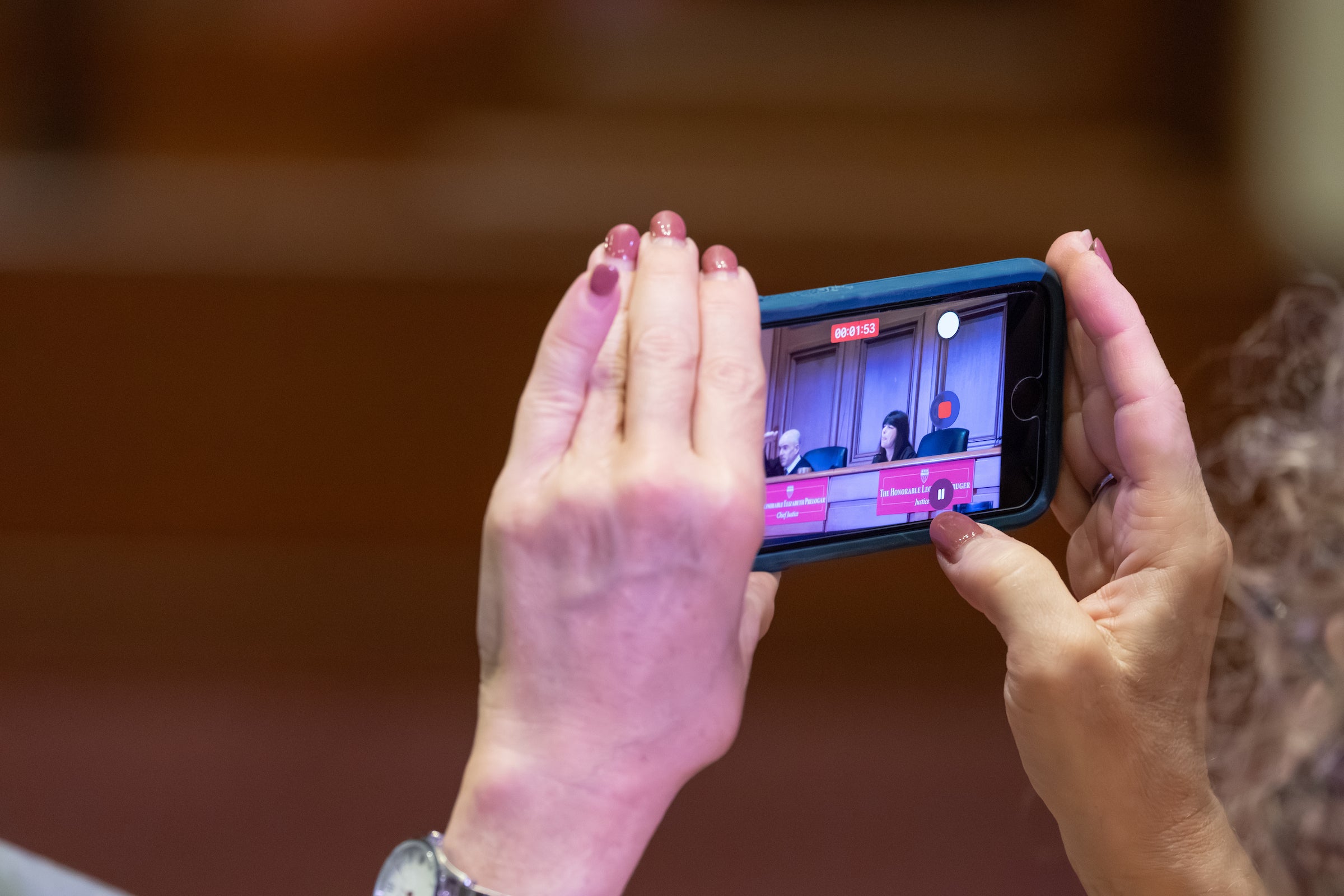
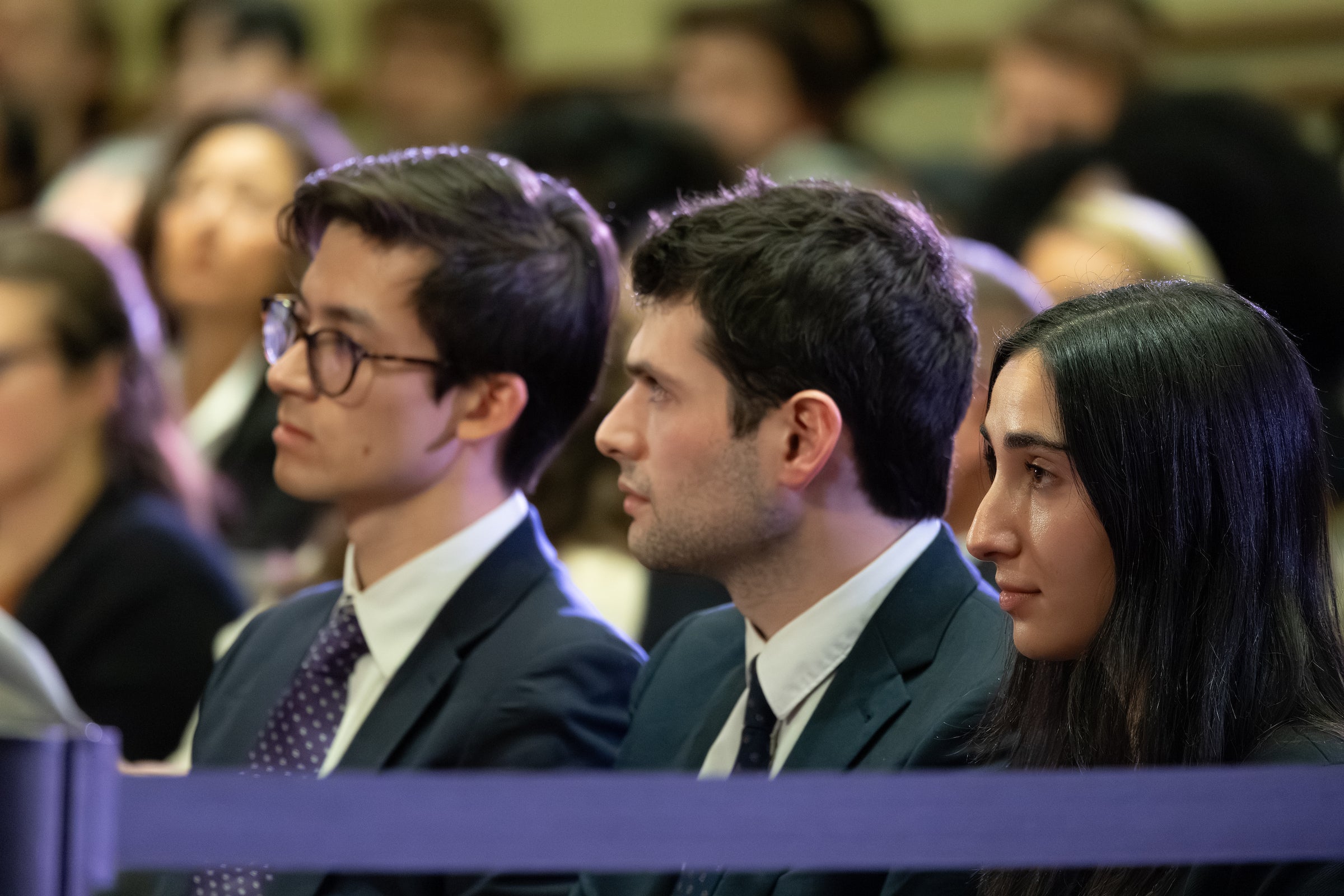


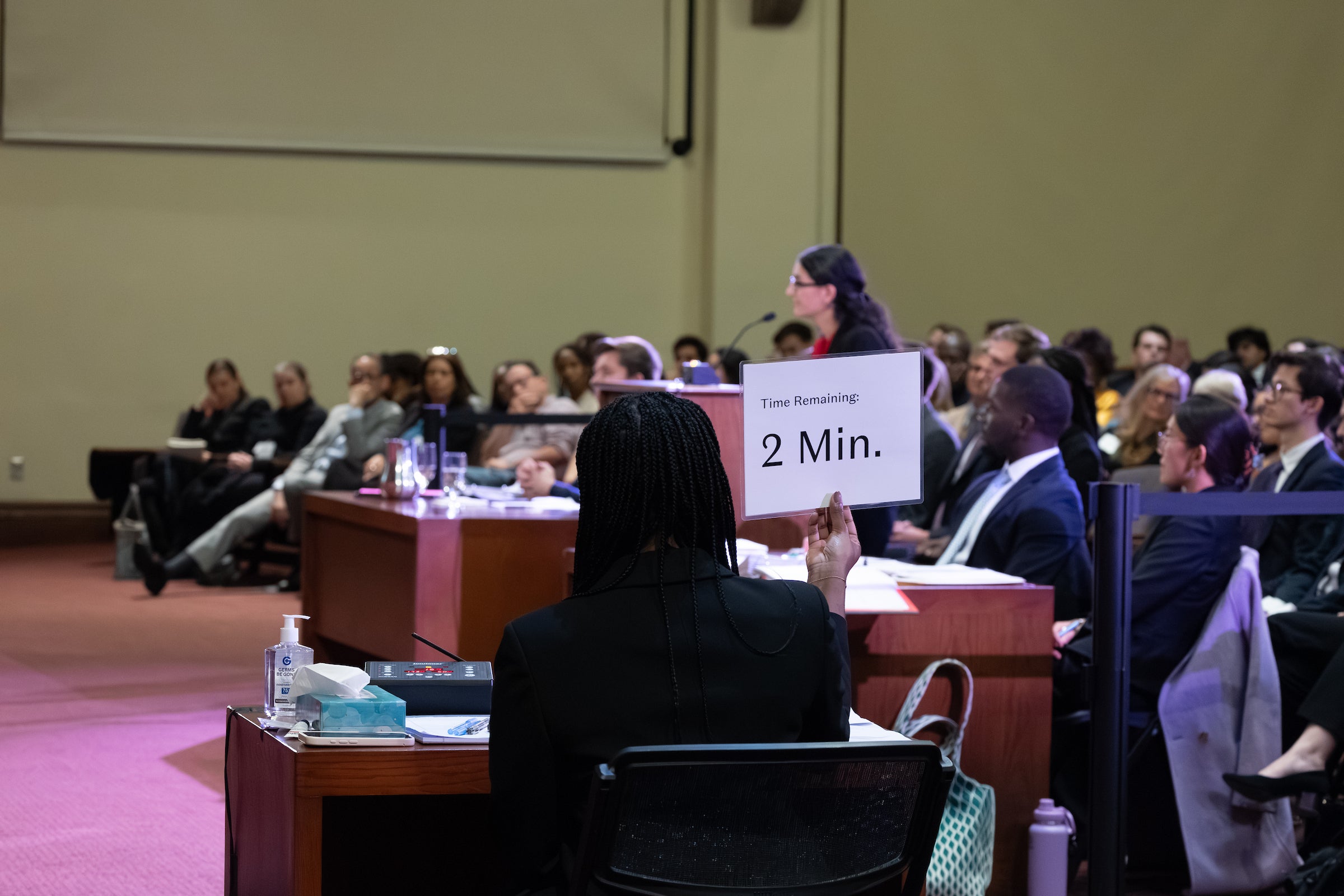




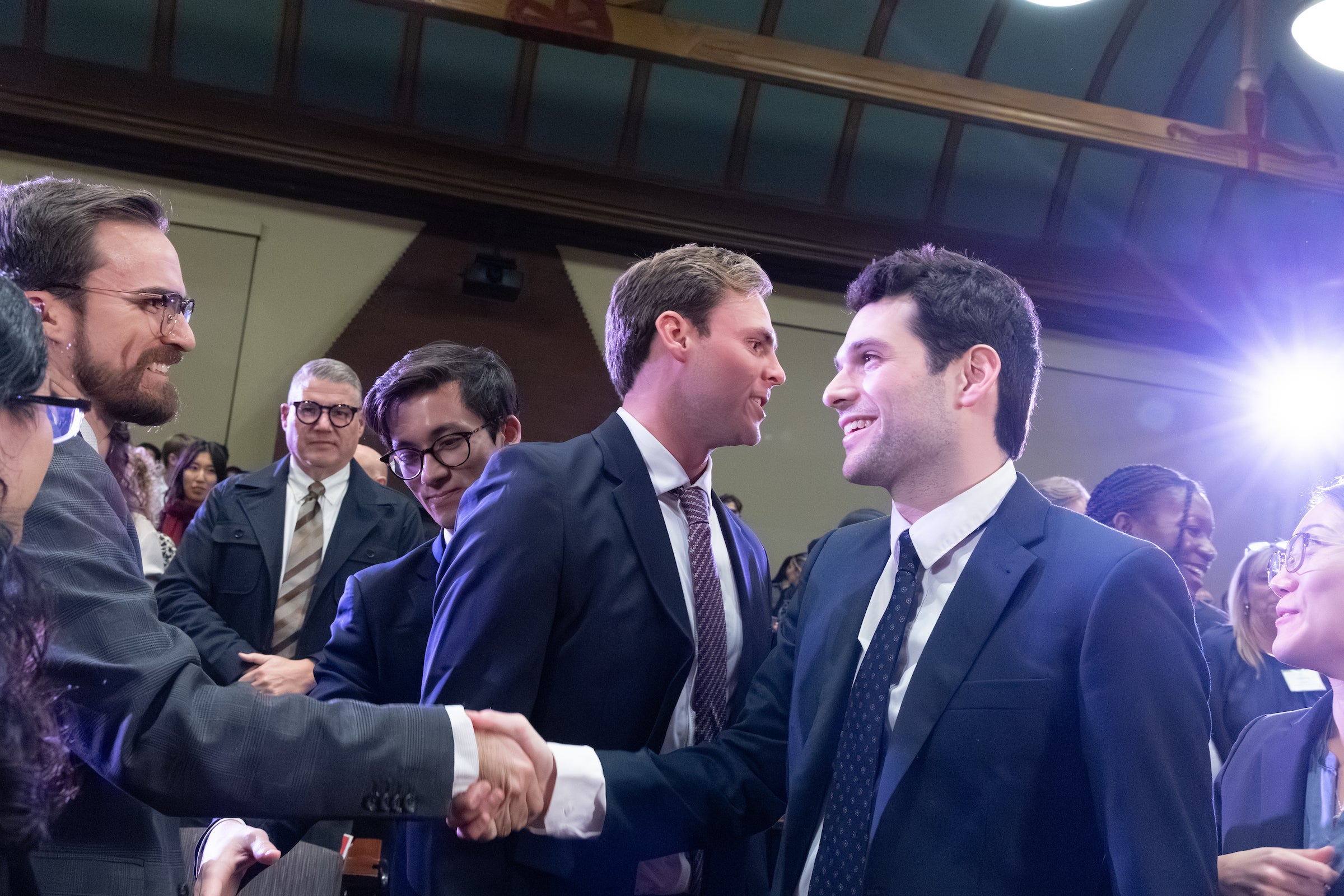
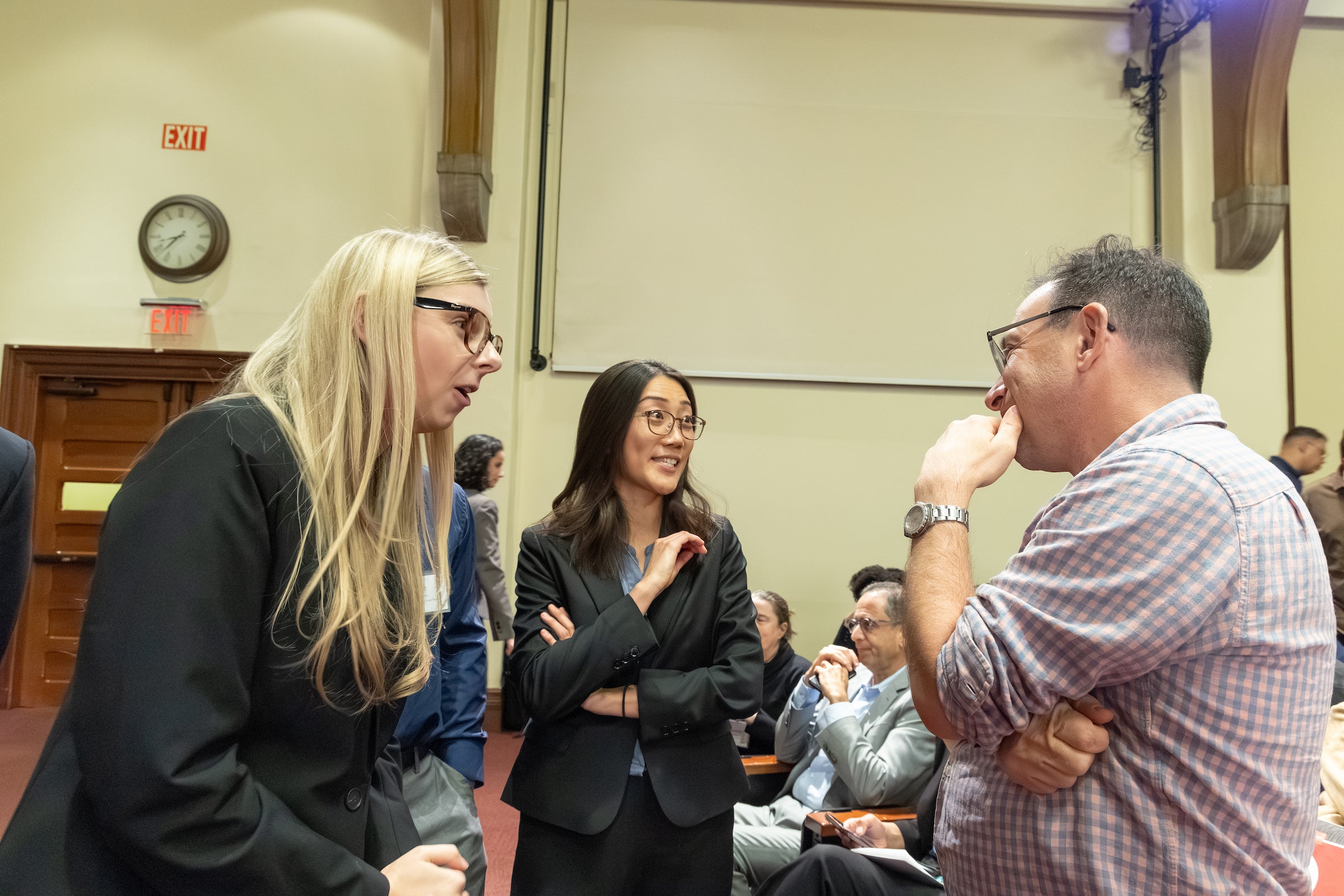




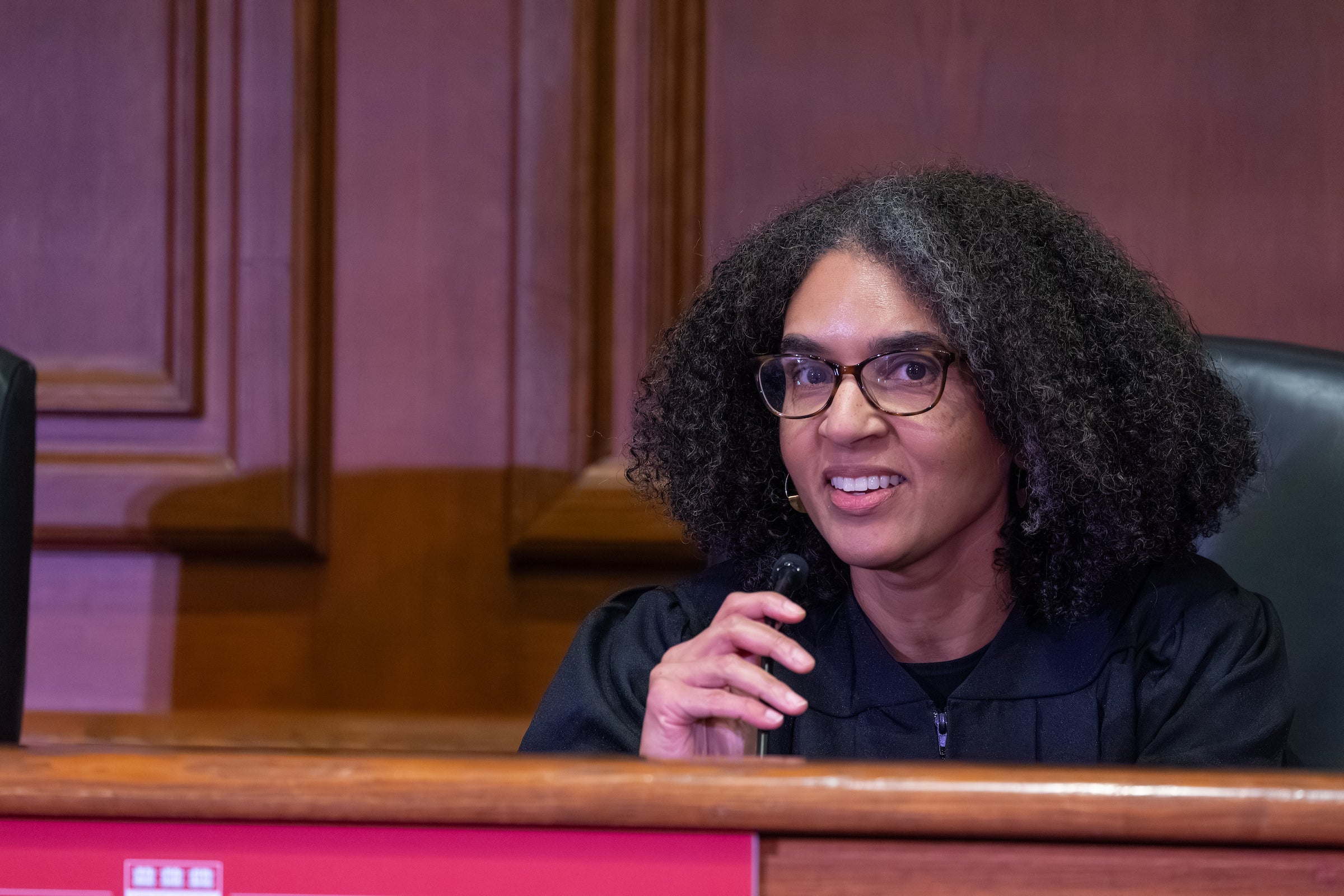


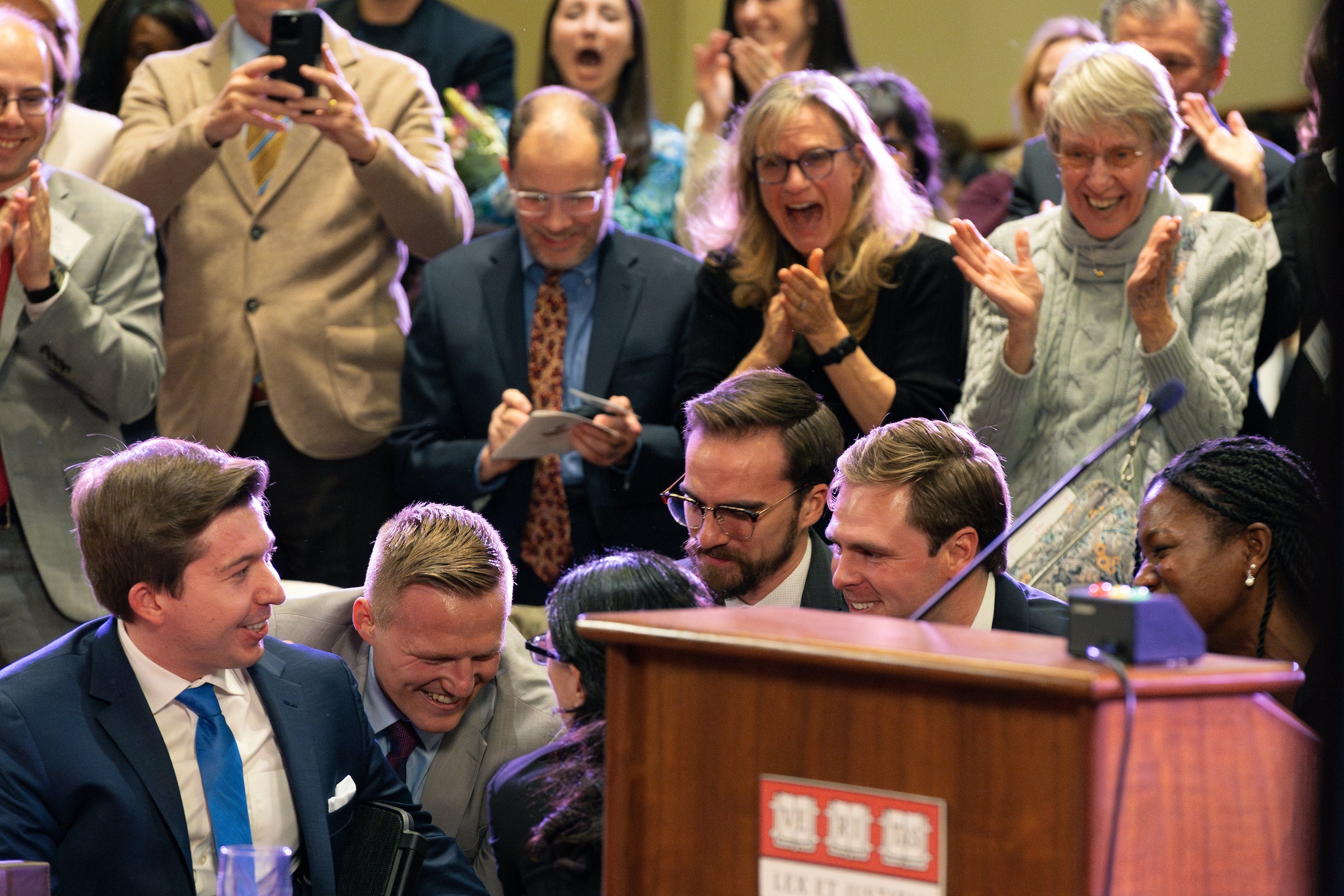
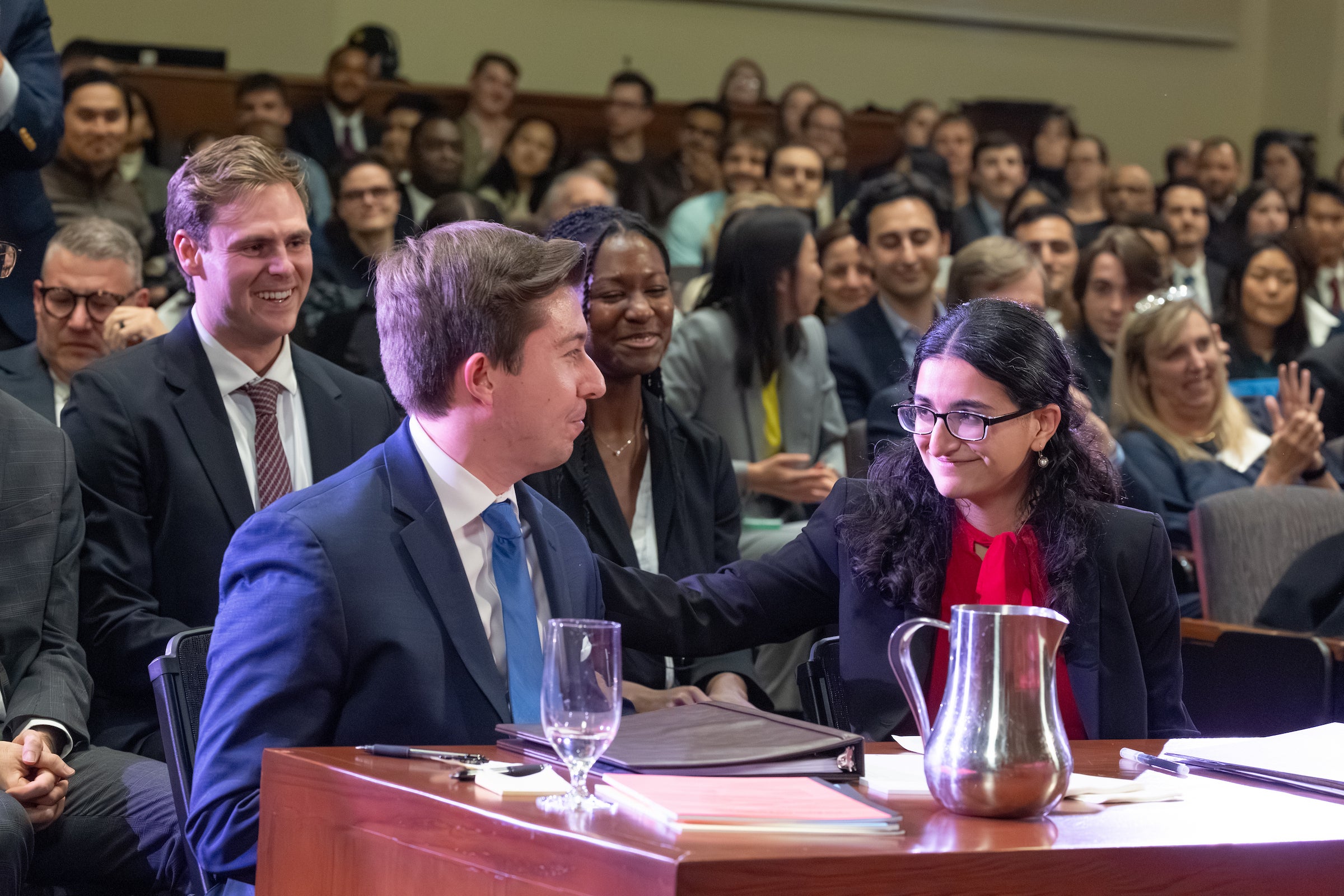

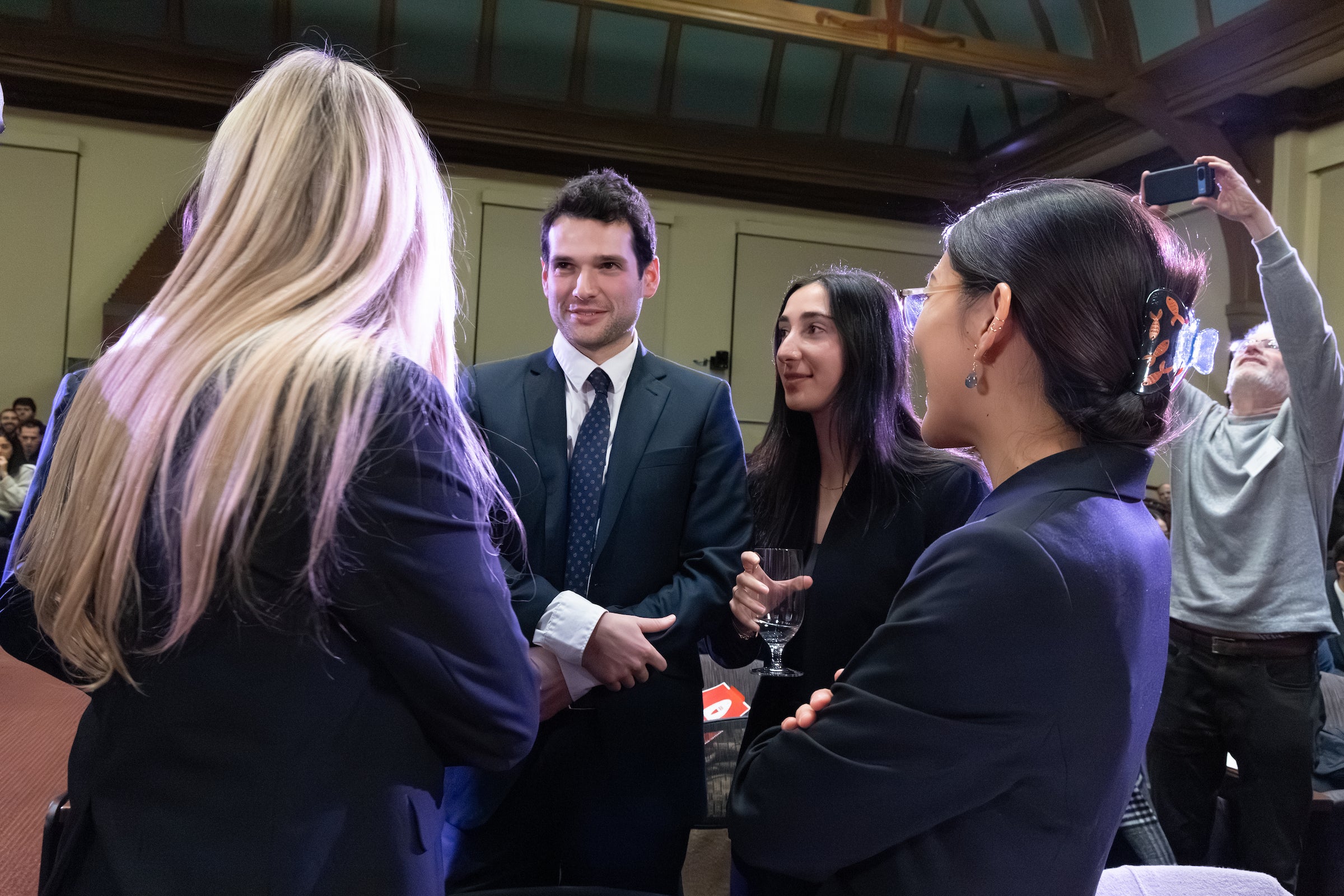



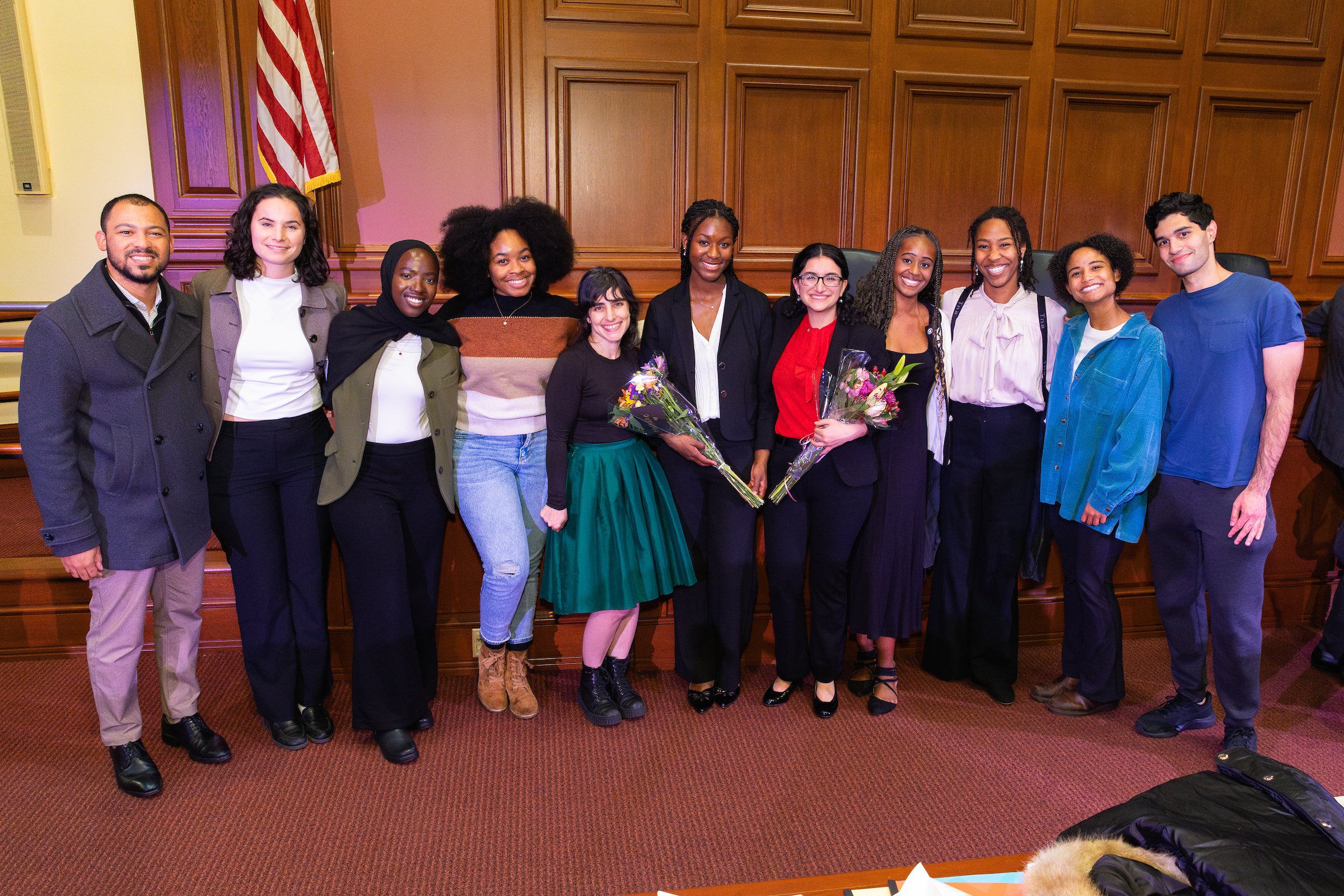
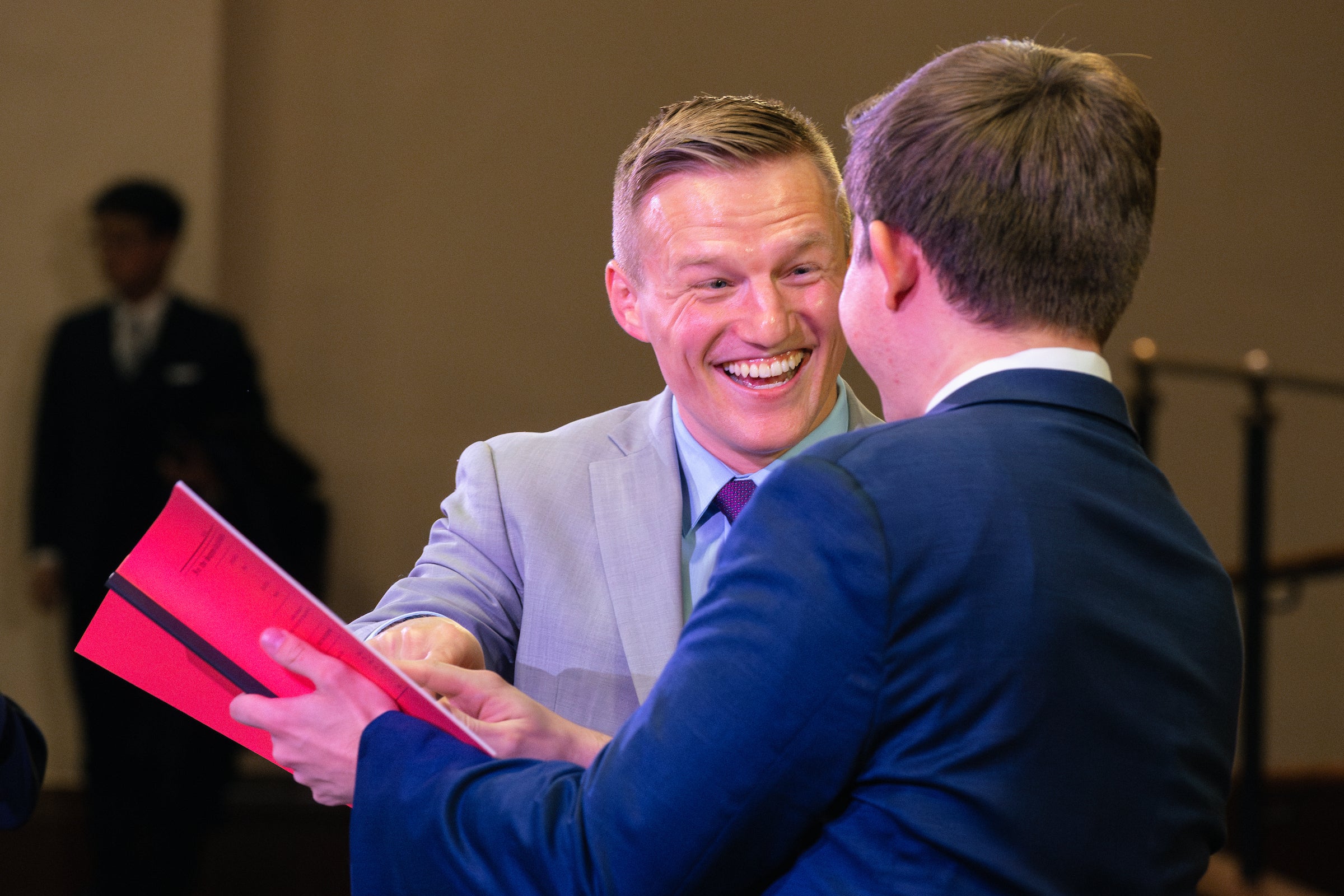
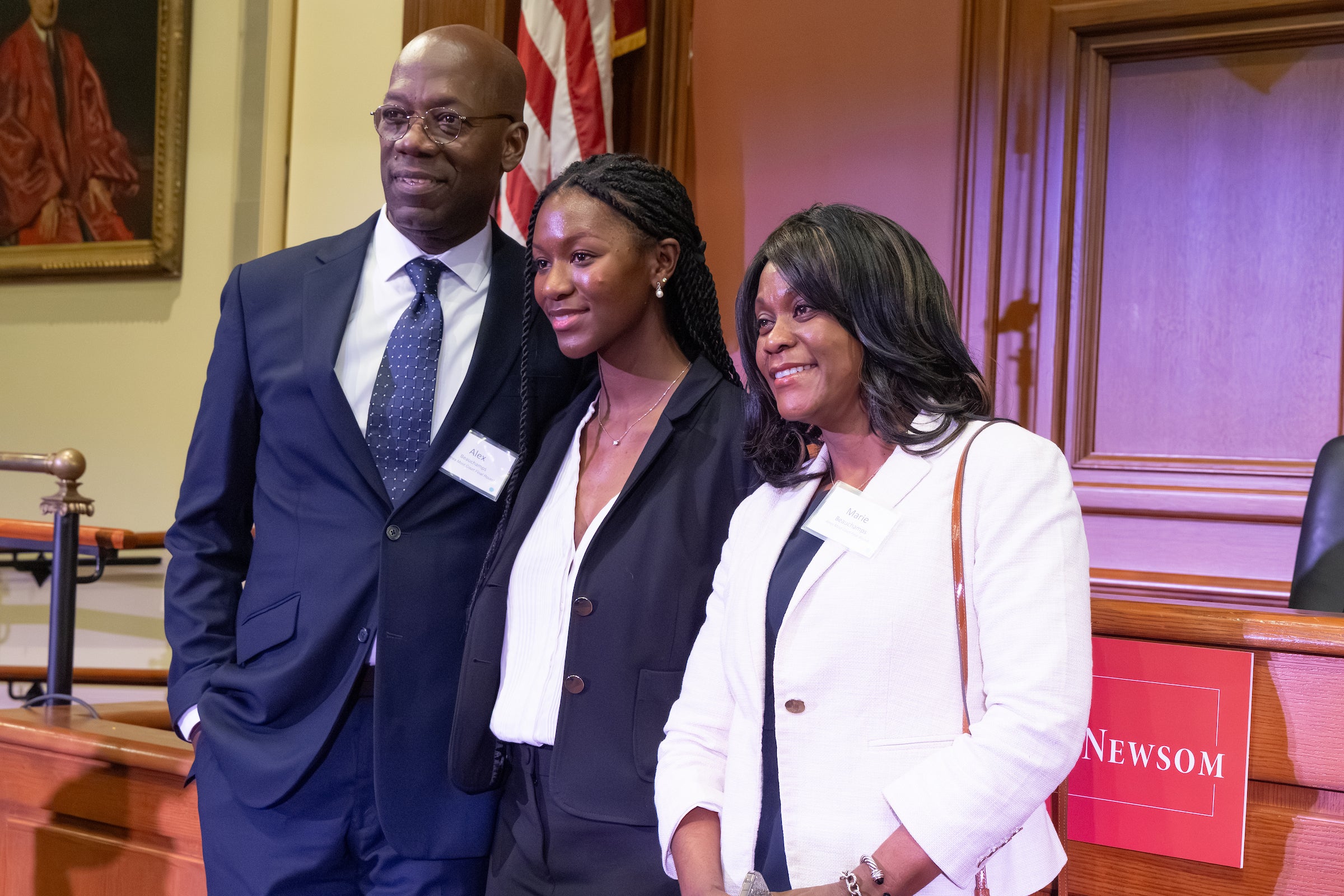
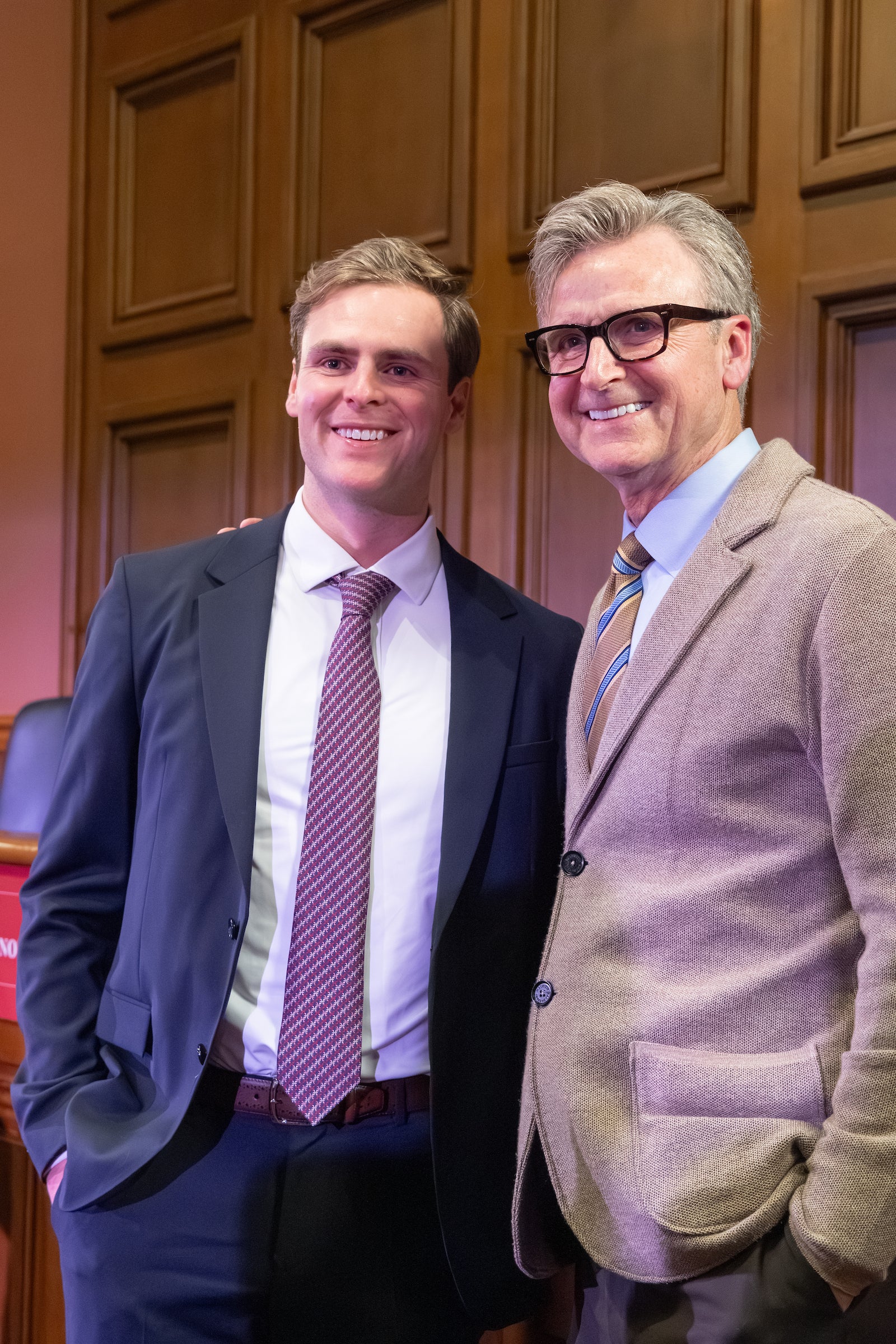
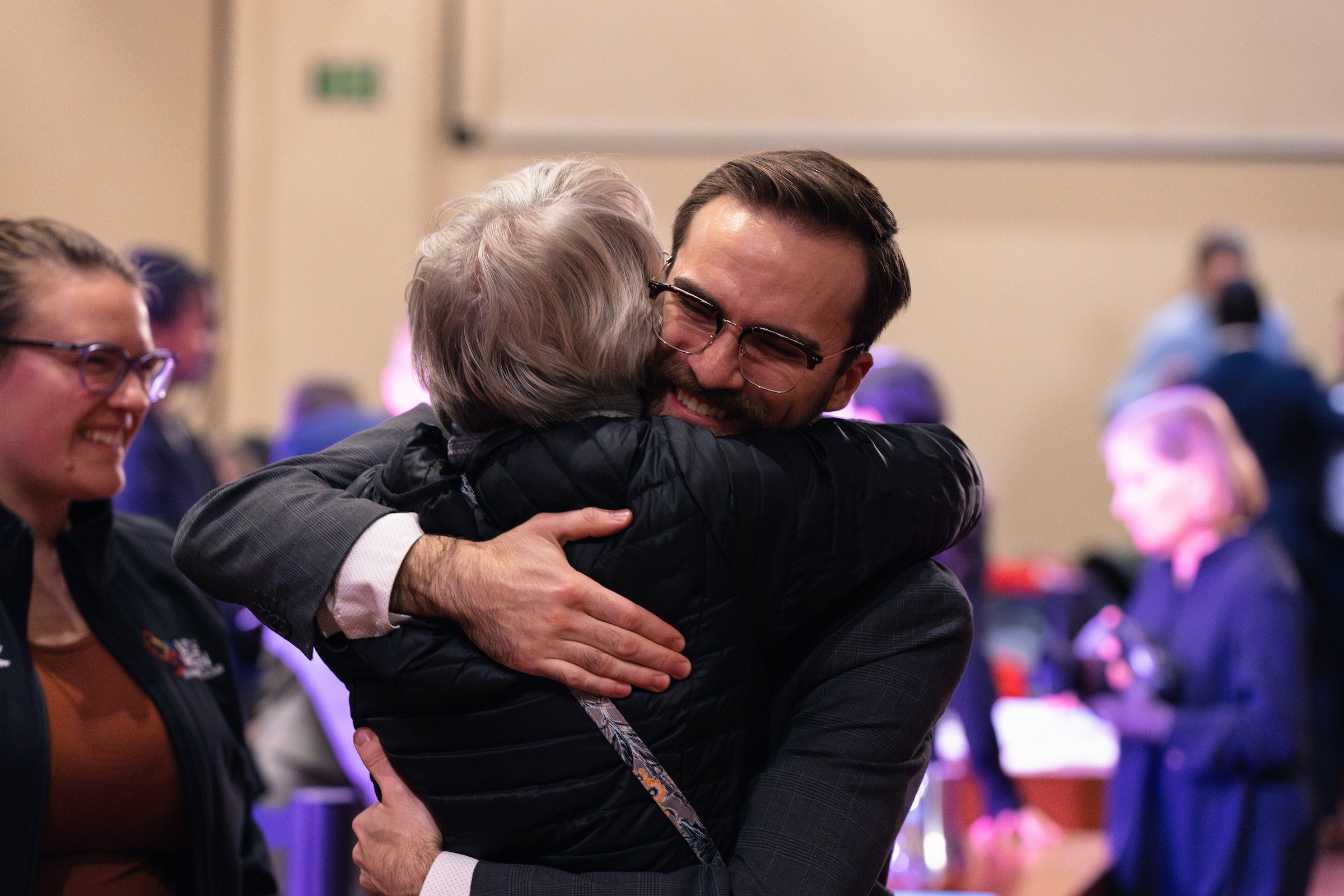
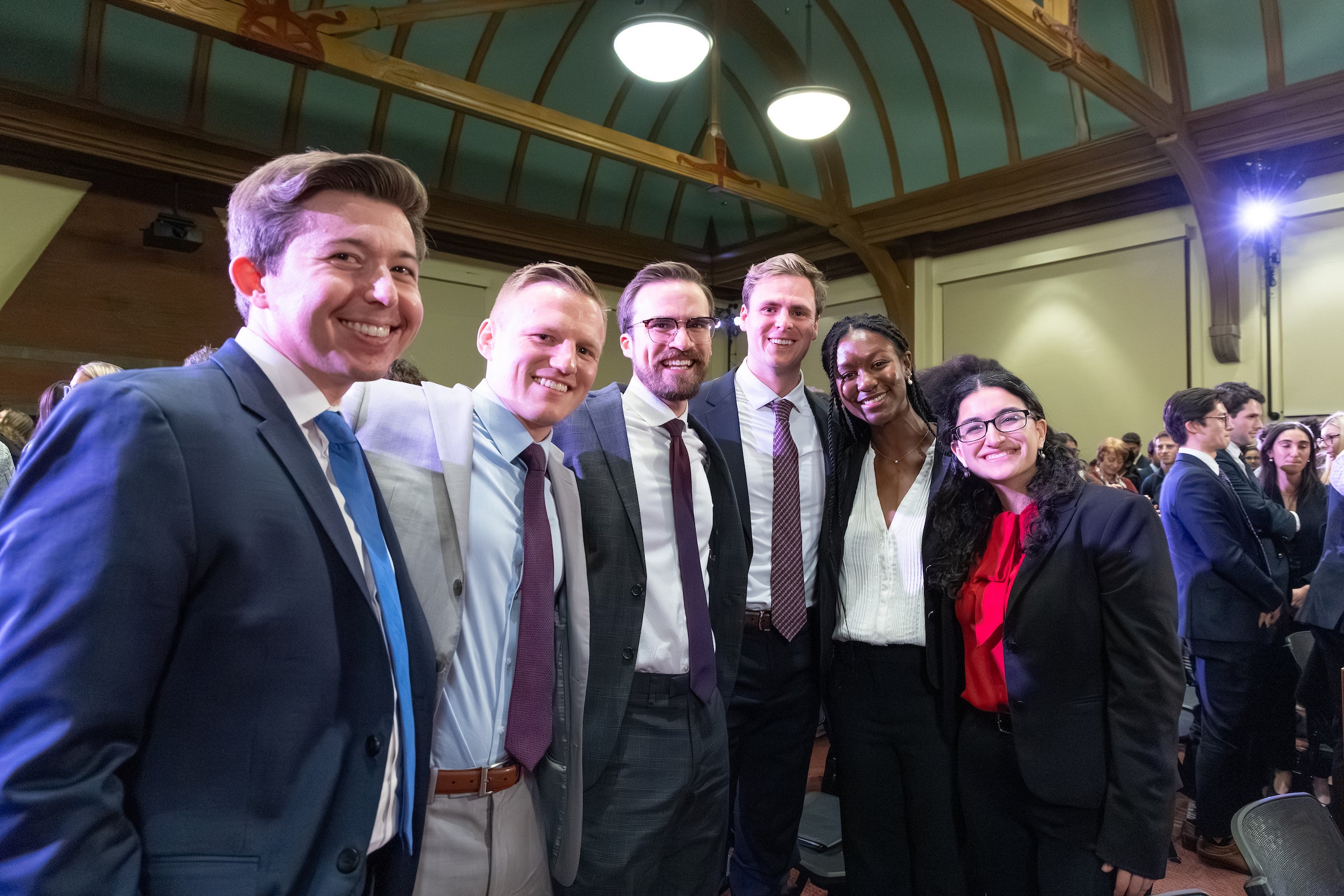



Want to stay up to date with Harvard Law Today? Sign up for our weekly newsletter.
